- Aquatics
- Garen Plants
- Downloads
- Garden Centres
- Landscape Stock
- Our Nursery
- Contact Us
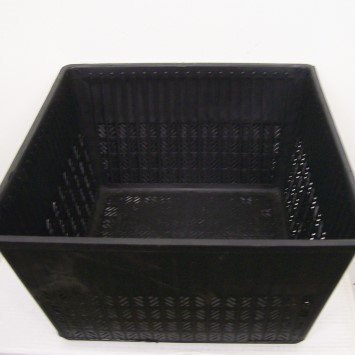
10L Mesh Aqua Basket

1L Round Mesh Basket
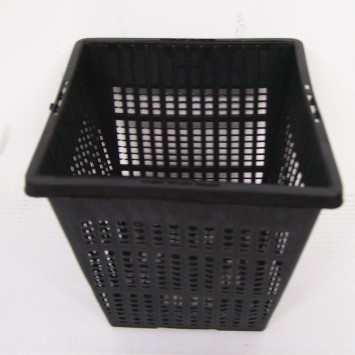
1L Mesh Aqua Basket.
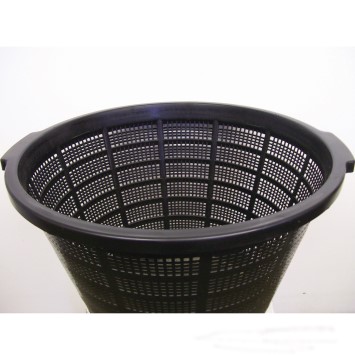
24L Round Mesh Basket
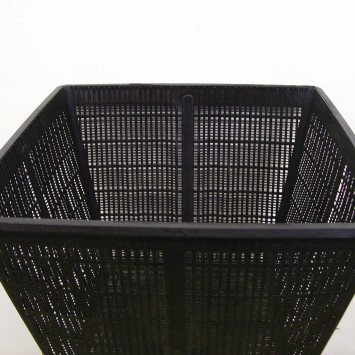
28L Mesh Aqua Basket
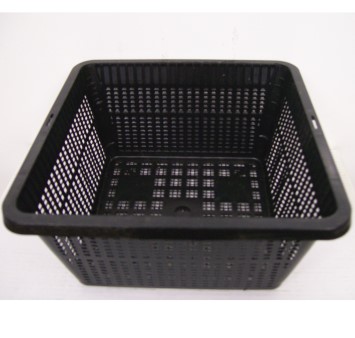
2L Square Mesh Aqua Basket
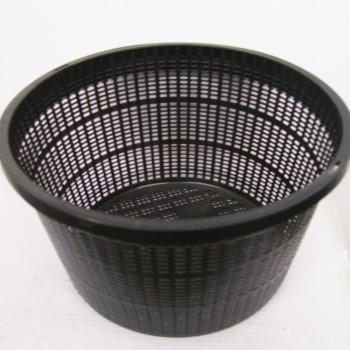
3L Round Mesh Basket
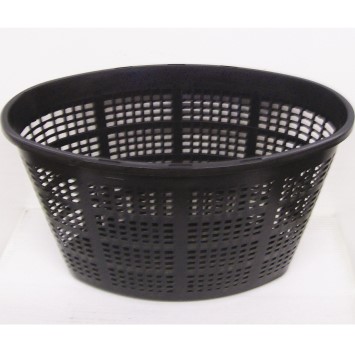
4L Oval Mesh Basket
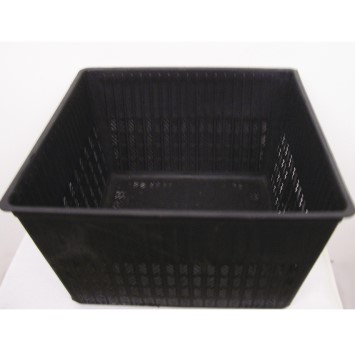
5L Mesh Aqua Basket
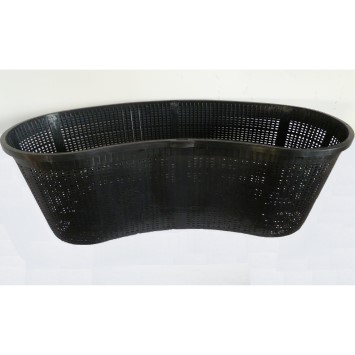
8L Planted Contour

A tall, emergent plant, this rush has leaves that give off a sweet scent when crushed or rubbed. In ancient times these rushes were cut and used as floor covering in huts – natures air fresheners! The creeping rootstock grows out into shallow water, producing multiple shoots. Roots hang down into the water and the plant has good filtration properties. The brilliant green erect leaves provide excellent habitat for emerging dragonflies and other pond life. Plant in a medium container using aquatic soil, cover with pea gravel. Trim decaying foliage in Autumn.
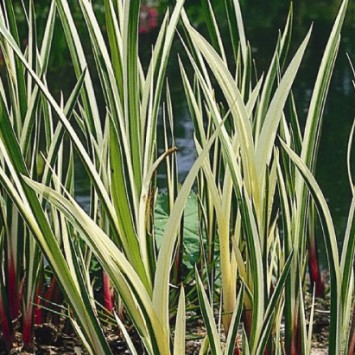
A tall, emergent plant, leaves are attractively variegated in yellow and green. This rush has leaves that give off a sweet scent when crushed or rubbed. In ancient times these rushes were cut and used as floor covering in huts – natures air fresheners! The creeping rootstock grows out into shallow water, producing multiple shoots. Roots hang down into the water and the plant has good filtration properties. The erect leaves provide excellent habitat for emerging dragonflies and other pond life. Trim decaying foliage in Autumn.
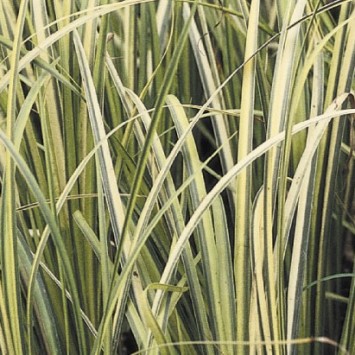
This Acorus has striking foliage that is striped in golden yellow and green. A dwarf variety that grows to around 30 cm.
The leaves grow into attractive evergreen fans, that are easily divided in the spring.
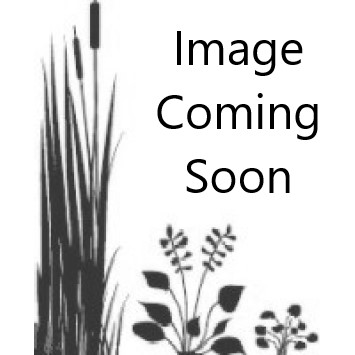
Grown for its striking evergreen foliage, this variegated form of Acorus is striped in golden yellow and green. A dwarf plant, only growing to 30 cm, it is ideal for planting where the showy foliage compliments the rich greens of other plants. Leaves grow into attractive fans which are easily divided to propagate new plants. Requires moist soil conditions. This plant also features in our award-winning Lifestyle collection. An ever-evolving, high impact and versatile range of both traditional and contemporary Garden Plants. This plant is suitable for container and border planting.

A pretty foliage plant, the leaves are brightly striped with green and pale cream. Leaves grow out in attractive fan shapes, contrasting nicely with other planting. Evergreen, the foliage provides interesting winter colour in the garden. Keep soil conditions moist. or plant up to 10 cm deep as a marginal pond plant. Fans of foliage can easily be divided off in the spring to start new plants. This plant also features in our award-winning Lifestyle collection. An ever-evolving, high impact and versatile range of both traditional and contemporary Garden Plants. This plant is suitable for container and border planting.

Gives a wonderful show of large flowers in mid to late summer. A very showy plant; flowers are white on tall stems. Suited to most soils in full sun; keep moist but well drained. Height to 60 cm to 1 m. Attractive to insects. Plant in the garden or grow as a feature in a patio pot. Apply liquid feed monthly from spring to flowering. Clump forming perennial to enjoy year after year. Semi-hardy, mulch in winter or move container to protected position. Dies back in winter. Propagate by division in spring. Excellent for cut flowers.
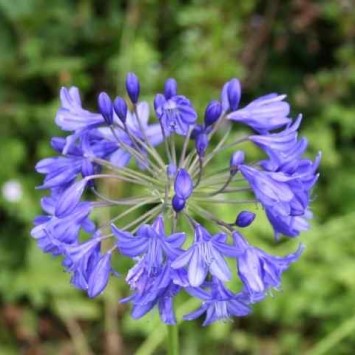
Gives a wonderful show of large flowers in mid to late summer. A very showy plant; flowers are blue on tall stems. Suited to most soils in full sun; keep moist but well drained. Height to 60 cm to 1 m. Attractive to insects. Plant in the garden or grow as a feature in a patio pot. Apply liquid feed monthly from spring to flowering. Clump forming perennial to enjoy year after year. Semi-hardy, mulch in winter or move container to protected position. Dies back in winter. Propagate by division in spring. Excellent for cut flowers.

Alchemilla are perennials with palmately lobed basal leaves and sprays of tiny, yellow or greenish flowers A. mollis is an herbaceous perennial forming a clump of softly hairy, light green leaves with scalloped and toothed edges. Small, bright yellow flowers are borne in large sprays just above the foliage.
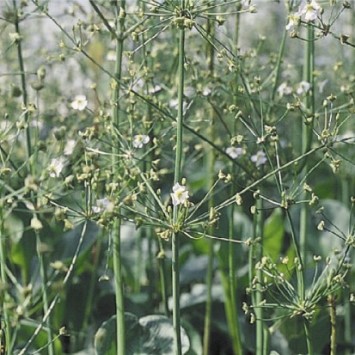
A compact variety that grows to around 45 cm. It has rich green foliage with rounded leaves and sprays of tall white flowers in the summer.
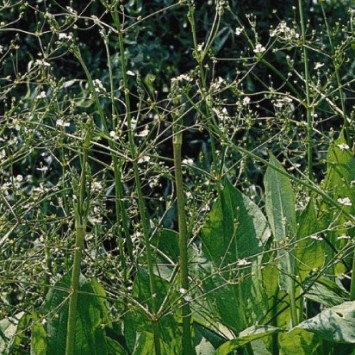
Water plantain produces strong clumps of large stalked leaves with panicles of small, delicate pink-white flowers born above the leaves. A native British pond plant. Plant in a medium container using aquatic soil, covering with pea gravel. Trim decaying foliage in Autumn.

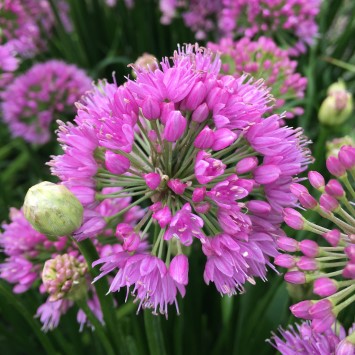
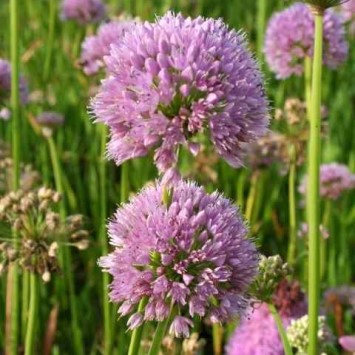
These lovely ornamental plants are related to the edible onion and are highly scented. They have small flowers packed together in dense sphericalumbels of white to lavender pink. This allium likes an open, sunny situation with well drained soil. Attractive to bees and butterflies. This Perennial plant is also in our award-winning Kind to Nature collection. It is now widely accepted that gardens are vital for the survival of the UKÔÇÖs wildlife. Gardens make up the majority of the green space in Britain and make significant contribution to the conservation of wildlife. Pollen and nectar rich plants are attractive to many species of insect. Pollen provides a source of protein needed for insect egg production and nectar is a valuable source of carbohydrates needed for energy. Plant your flowers in groups because en masse colour and scent is easier for insects to detect.

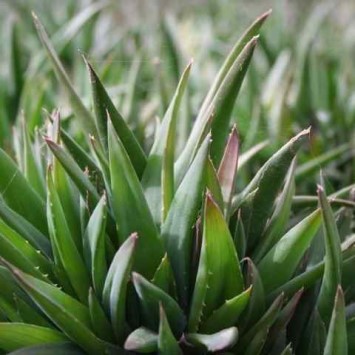
This unusual succuent forms densley packed clumps with spikey fleshy leaves that are dark green in colour turning to dark bronze as the plant matures. Ideal for the low maintenance garden, aloes are drought resistant and tolerate poor, low fertile soils. ‘Black Gem’ makes a lovely feature in a rockery, or can be used as a specimen plant for container growing on the patio or in a conservatory. Height to 10 cm.

This delicate little plant has masses of tiny round leaves on creeping stems. Pretty pink flowers are held above the leaves; the flowers open widely in full sun. It can be grown as a shallow water oxygenator or a marginal plant. Submerged oxygenating plants help to balance the pond ecology, increasing the oxygen level in the water during daylight hours and providing cover for pondlife. They help to reduce unsightly algae and provide a better environment for fish.
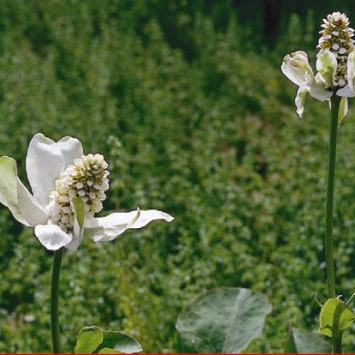
This tall, hardy marginal plant has beautiful white flowers resembling anemones, similar to the flowers of Houttunia. The pungent, aromatic rootstock is of great medicinal value. It is also strung into necklaces in the form of beads to ward off malaria and other diseases. Plant in a medium or large planting basket using aquatic soil topped with aquatic pea gravel. Seed can be sown in late summer when fresh.
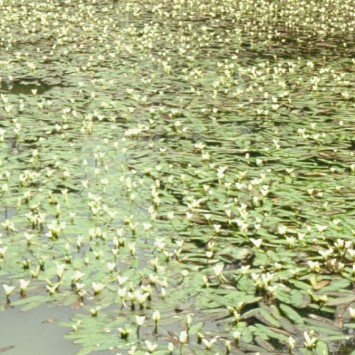
A favourite pond plant, the Water Hawthorn is sweetly scented and free flowering. It is a deep water aquatic, growing in 10 to 90 cm of water. Green oval leaves float on the water surface; the unusual white flowers grace the pond in April and May.It originates from South Africa where the edible bulbs are an important food source.
This medium deep marginal plant offers fragrant white flowers throughout most of the year (dies back July/August). Water hawthorn will cover an area of apprx. 70 – 120cm, once established. Submerge plant at a shallower depth for 3-4 weeks, then place at required depth (see label) KEEP AWAY FROM MOVING WATER. Feed with slow release fertiliser in early spring.
Planting Depth – 30 – 90cm
Flowering Time – January – July, October – December
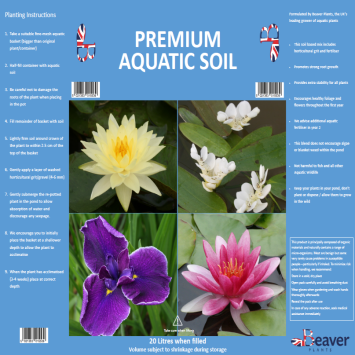
Our aquatic compot is availabile in two sizes by the pallet.
10L Bags with 120 per pallet
20L Bags with 60 per pallet
Free delivery
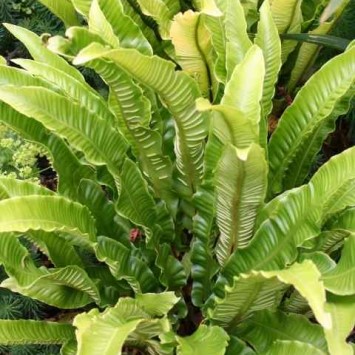
A beautiful form of the Hart’s tongue fern that prefers shaded areas. It is best grown in a sheltered position under trees or among rocks. The foliage is attractively ‘crimped’ at the edges. Good for a damp, shaded area in a wild garden. It will provide year round interested and requires very little attention. Height to 30 cm. This plant is also suitable for the Pondside/Bog garden. Place around the edge of a pond, providing soil is damp and not waterlogged. Alternatively plant in damp areas of the garden.
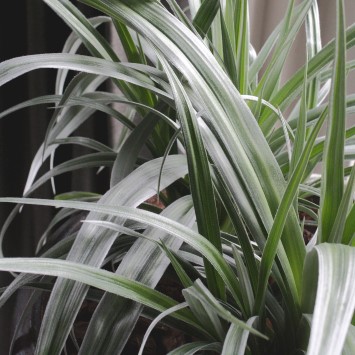
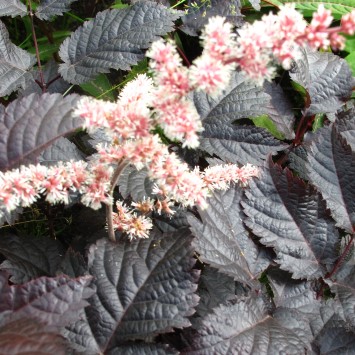
Astilbe Chocolate Shogun has very dark chocolate-bronze lacy leaves. It produces pale pink feathery flower plumes.

Feathery plumes of pinkish-purple flowers over dramatic chocolate-brown foliage.
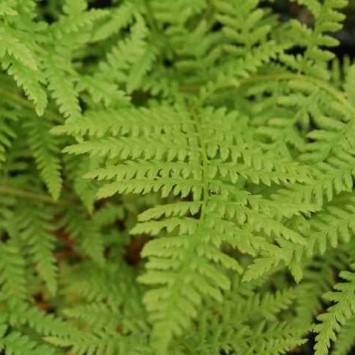
The graceful ‘Lady fern’ has delicate, bright green, ladder-like deciduous foliage. It likes a shady situation and looks lovely planted at a woodland edge. Excellent for a shady place in the garden where other plants may not thrive. Plant in moist soil with well rotted leaf mold. Height to 120 cm. This plant is also suitable for the Pondside/Bog garden. Place around the edge of a pond, providing soil is damp and not waterlogged. Alternatively plant in damp areas of the garden.
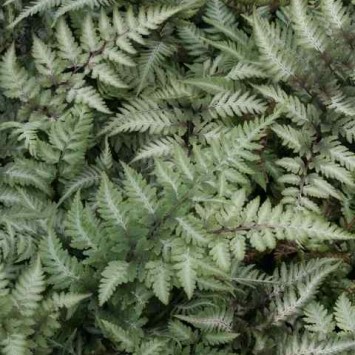
A pretty, deciduous fern, leaves are silvery-green with a purple tinge. Broad triangular fronds grow from the reddish-brown root-stock. Needs to be kept moist at all times. A beautiful foliage plant that can succeed in a difficult situation where other plants would fail. Ideal to enhance a shady situation in the garden. This plant is also suitable for the Pondside/Bog garden. Place around the edge of a pond, providing soil is damp and not waterlogged. Alternatively plant in damp areas of the garden.

This small plant produces clumps for small green elaves with an abundance of small white flowers.
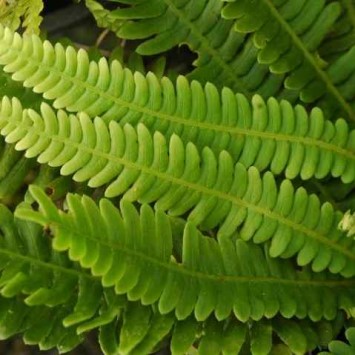
A British native plant, this pretty, evergreen fern has narrow dark green fronds are lance shaped and leathery in appearance. Prefers a shady situation and peaty soil with moist conditions. Ferns are excellent subjects for shady situations indoors, on a shaded part of the patio in a feature pot, or in a shady corner of the garden. Keep pots well watered. Height 45 cm. This plant is also suitable for the Pondside/Bog garden. Place around the edge of a pond, providing soil is damp and not waterlogged. Alternatively plant in damp areas of the garden.

A very pretty wild grass with tufts of smooth, flat grey-green leaves. It forms tight mounds of foliage with many delicate quaking flowerheads. Grows to 60cm.
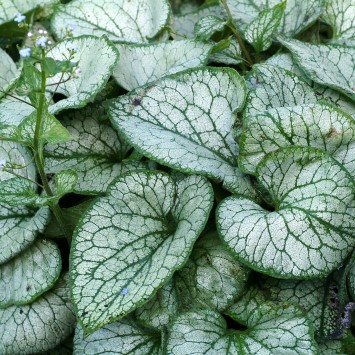

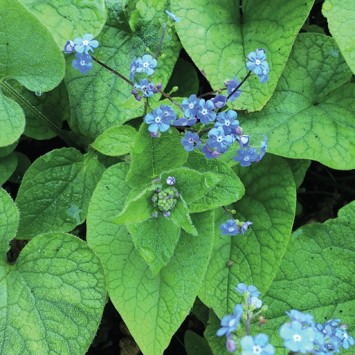
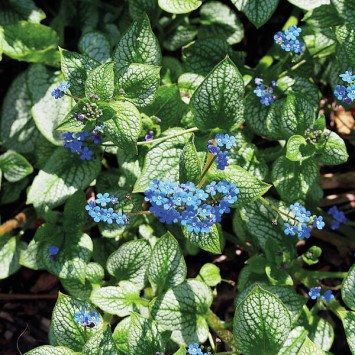
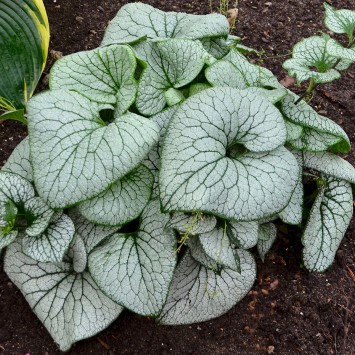
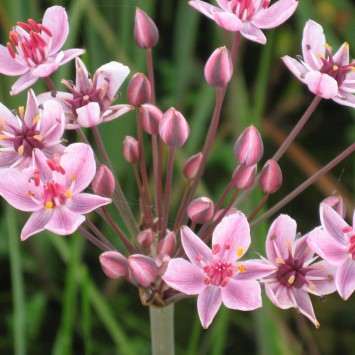
This is the only member of the rush family to bear a flower. Tall flower stems up to 120 cm carry lovely umbels of pink flowers with deep red centres. Green leaves are narrow and fleshy, triangular in section. Tall, emergent plants such as Butomus provide habitat for pond insects, especially emerging dragonflies. It can be planted up to 30cm deep, useful for deeper water areas where some other marginals would not thrive.
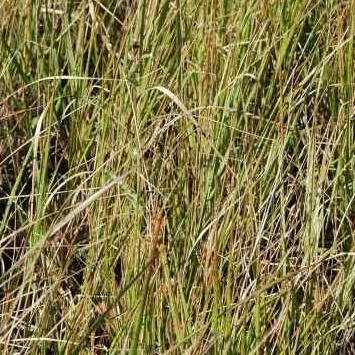
This pretty ornamental grass has deep lustrous green foliage with vertical plumes of buff flowers providing winter interest.
Upright foliage, grows to 2 m. and does not need staking. Prefers slightly moist soil. Trim back old foliage in early spring to 12 cm.
Plants can be divided in spring. A hardy perennial to enjoy year after year. This hybrid is sterile, so it will not self seed and become invasive in the garden.

A compact tufted grass that forms a clump of narrow yellow to cream striped leaves topped with feathery plumes in late summer. Can grow to 1.2m.

This is an attractive little plant for the pond margins. Shiny, heart-shaped leaves are a rich green, accentuating the beauty of the unusual white flower spathes. These are followed in the autumn by a globular cluster of red berries. A low, rafting plant, the floating rootstocks creep across the water providing excellent cover for aquatic life. New plants can be propagated by dividing the rootstock. This plant is unusual as it is one of the few known to be fertilised by pond snails. In Lapland the rhizomes are used to produce flour that is baked into a kind of bread.

A submerged oxygenating plant native to Britain, callitriche has masses of small, bright green leaves that eventually reach the surface and spread into attractive mats. Provides excellent cover for young fish and other aquatic life. Plant in small or medium container using aquatic soil, covering with pea gravel. Place in the deepest part of pond (up to 5ft).
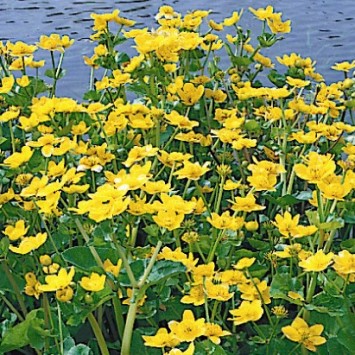
One of the earliest plants to flower in the water garden, the Marsh Marigold gives a glorious display of golden yellow flowers to herald the spring. Erect stems with round serrated foliage. A favourite British pond plant, height to 60 cm. If cut back after flowering, it wil often flower again in autumn. Trim decaying foliage in late autumn.

The beautiful Marsh Marigolds are one of the earliest flowering plants in the water garden. This white flowered variety grows to about 25 cm. in height. Grow in bog conditions or very shallow water at the pond margin. If cut back after flowering they will often flower again in late summer.
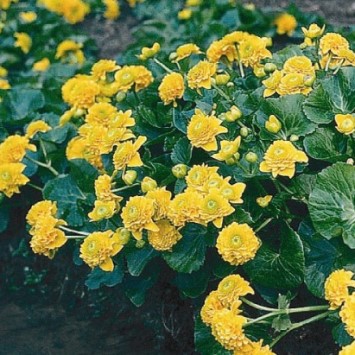
This Marsh marigold heralds the spring with a gorgeous display of multi-petalled vibrant yellow flowers. Green leaves are round and serrated. Should be left to grow into pleasing clumps which, when large enough for their situation, can be raised very early in the year as growth starts for splitting; tease the roots apart to divide into smaller clumps and plant in a medium container using aquatic soil and covering with pea gravel. Do not bury the crown of the plant. After flowering, remove the dead flower heads and this lovely plant will often flower again in late summer/early autumn.




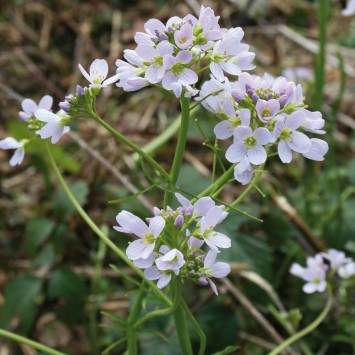
A pretty British native pondside plants that grows to 40 cm in height. It has delicate sprays of pale lilac flowers. Does best in shady position with moist soil.
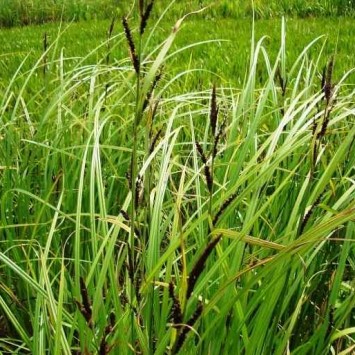
A tall, graceful indigenous sedge with bright green leaves and brown flower spikes, forms clumps providing good habitat for wildlife. Height to 150 cm.
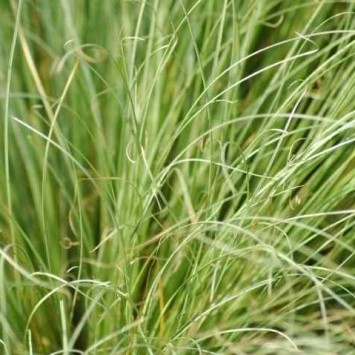
A beautiful carex with light tan-green coloured foiage, has an attractive drooping habit; foliage has a distinctive sheen. Especially effective as an edging plant, or featured in a rock garden or container. Soil must have good drainage. Grow in full or part sun. Height to 60 cm. Trim back old foliage in spring.
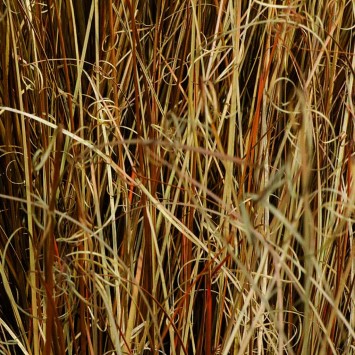
A beautiful orange to reddish brown coloured grass, that forms dense fountain-like tufts of slender folaige. An everygreen that adds colour and movement.

C. comans bronze-leaved is an evergreen perennial to 30cm, forming a dense tuft of narrowly linear, reddish-brown leaves, with inconspicuous brown flower spikes in late summer .Carex can be deciduous or evergreen, rhizomatous or tufted perennials, with triangular stems bearing linear or strap-shaped leaves and short or long spikes of tiny green or brown flowers
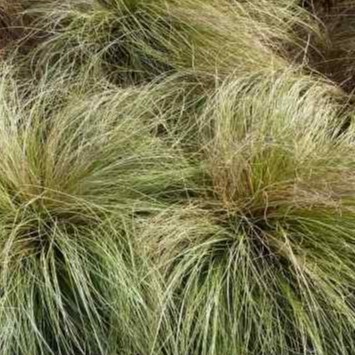
Frosted Curls’ is an evergreen perennial creating a mop-head of very slender, shimmering, silvery-green leaves. The flowers are insignificant.
Carex can be deciduous or evergreen, rhizomatous or tufted perennials, with triangular stems bearing linear or strap-shaped leaves and short or long spikes of tiny green or brown flowers

Aurea’ is an evergreen perennial forming a compact clump of upright or arching, narrow, bright yellow leaves, to 70cm in height, with small blackish flower spikes on erect stems to 45cm in height in early summer. Carex can be deciduous or evergreen, rhizomatous or tufted perennials, with triangular stems bearing linear or strap-shaped leaves and short or long spikes of tiny green or brown flowers
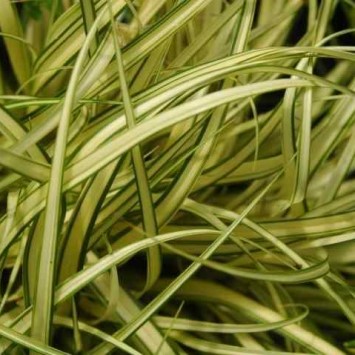
Evergold’ is an evergreen sedge forming a clump to 30cm in height, the narrow arching leaves each with a central yellow stripe. Flower spikes, brown, inconspicuous. Carex can be deciduous or evergreen, rhizomatous or tufted perennials, with triangular stems bearing linear or strap-shaped leaves and short or long spikes of tiny green or brown flowers

This evergreen plant looks great in summer and winter. It’s banded white and green foliage can grow to 60 cm wide.
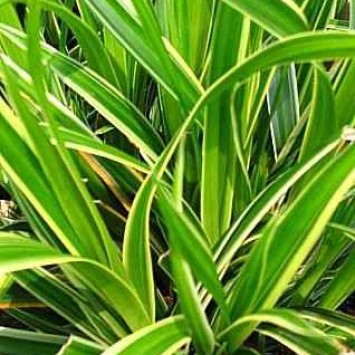
Ice Dance’ is an evergreen sedge forming a low, slow-spreading tufted mound. The green, glossy leaves are edged with white and small, inconspicuous brown flower spikes appear in late spring. Carex can be deciduous or evergreen, rhizomatous or tufted perennials, with triangular stems bearing linear or strap-shaped leaves and short or long spikes of tiny green or brown flowers
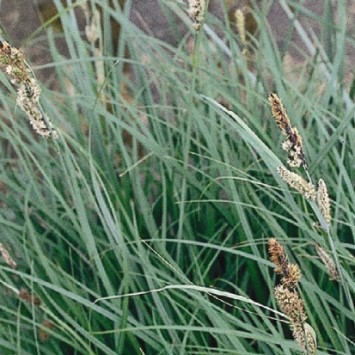
A lovely carex with slender blue-green foliage. Does not grow too tall and provides a pleasing backdrop for other marginals. Also is a nice rass for garden planting in a moist situation. Brown flower spikes are produced in summer. Trim decaying foliage in autumn. This versatile plant is as much at home in the margins of a pond, providing it is not planted too deep. We recommend no more that 5-10cm of water above the top of the pot.
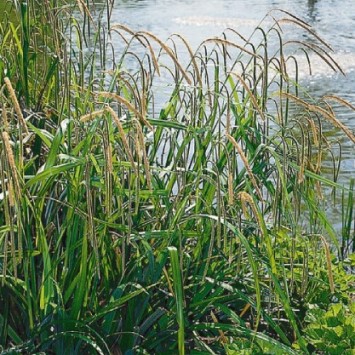
This British native plant has tall, grassy foliage with lovely pendulous brown flower spikes when mature. It is very resistant to waterfowl and is a good filtration plant. Formally used for weaving and hop-tying. An excellent marginal pond plant providing a good backdrop to the pond. Height to 120 cm. This versatile grass can also be grown in a moist situation in the garden where it provides a lovely pendulous backdrop to other plants.
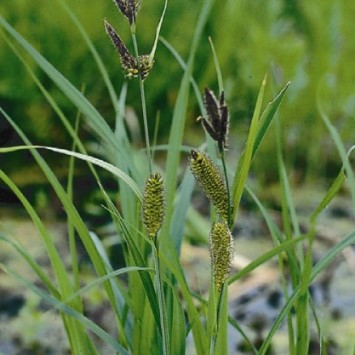
A tall Carex with green leaves and dark seed heads that contrast nicely with other plants.
These emergent plants benefit dragonflies. All sedges form clumps the provide good habitat for wildlife.
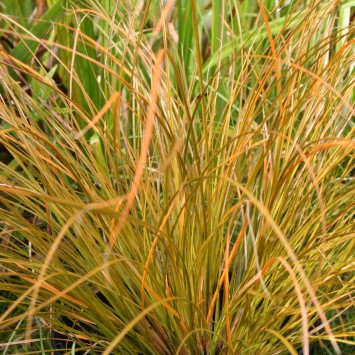
A dense, tufted evergreen grass with narrow bright green leaves tipped with orange. The folaige turns darker orange in the autumn with brown flower spikes in the summer. Grows to 50 cm.
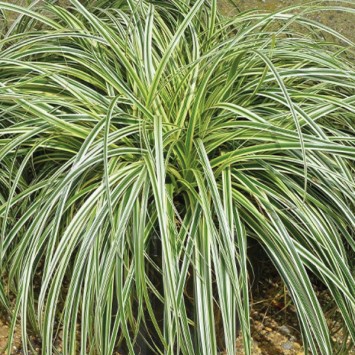
A slow growing durable, attractive grass with bright creamy white edged green leaves. Happy in sun or shade. Can grow to 50 cm tall.

A popular native British pond plant that forms a forest of dark green tufty leaves under the water.
A great oxygenating plant that is loved by newts and pond snails.
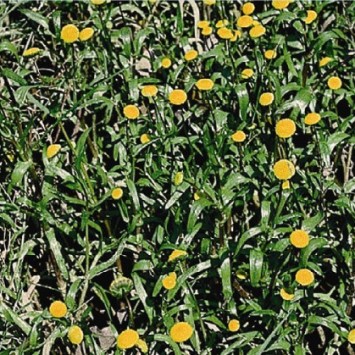
This pretty little plant grows on creeping stems in the shallow water at the pond margins. It produces masses of golden yellow flowers which resemble daises with the outer florets removed. The leaves are smooth and toothed; the foliage gives off an aromatic scent when crushed. Plant in a medium container in aquatic soil, covered with pea gravel. Place on marginal shelf.
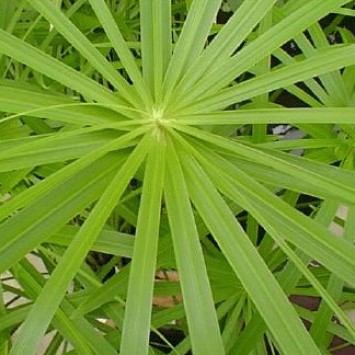
This tall Cyperus grows to 60cm high; the pale green foliage fans out like the spokes of an inverted umbrella, giving it the name ‘┬Ç┬ÿUmbrella Grass’┬Ç┬Ö. An attractive, adaptable plant useful as a graceful subject in general garden planting, or excellent featured in patio pots. Grows equally well in wet or normal planting conditions. Makes a eye catching house plant. This adapable plant is also an excellent marginal pond plant.

Egyptian Paper Grass. This is a spectacular sedge that can grow to 5 metres high. Tall, graceful mop heads of flowers are produced in summer. Used in ancient times to make paper and small boats, papyrus, which was thought to be abhorrent to crocodiles, was probably used to make the cradle that sheltered the infant Moses. A spectacular pond plant in up to 90cm of water, , or plant in moist conditions and use as a wonderful feature plant for patio planting or to include in garden planting schemes. Keep well watered and protect from frost in winter.

Percamenthus is a lovely miniature version of Cyperus papyrus. This African variety comprises moplike heads on triangular stems.
Foliage grows to 60cm.
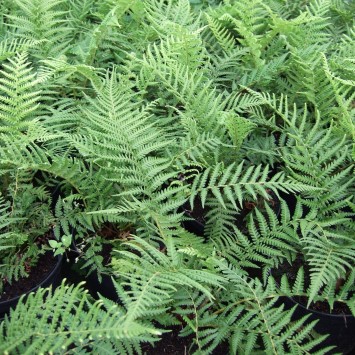
A slow growing fern that can reach heights of 4m. This fern with stout reddish-brown stems grows leaves of dark green fronds that can reach over 2m in length.
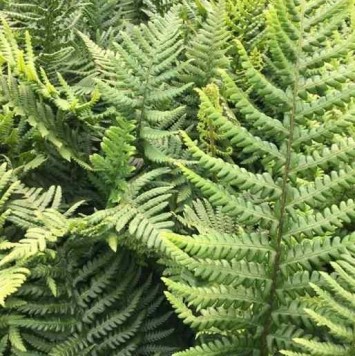
D. affinis is a robust semi-evergreen fern forming a rosette of erect, bipinnatifid fronds to 1.2m in length, bright yellow-green when young, later rich green, with dense, persistent golden scales on the stems. Dryopteris can be deciduous, semi-evergreen or evergreen ferns, with stout, erect or decumbent rhizomes and shuttlecock-like rosettes of lance-shaped to ovate, pinnately divided fronds. This plant is also suitable for the Pondside/Bog garden. Place around the edge of a pond, providing soil is damp and not waterlogged. Alternatively plant in damp areas of the garden.
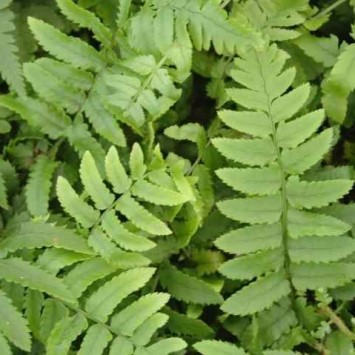
A tall fern with elegant yet sturdy fronds that are covered in tiny dark hairs giving it its distinctive appearance.
Can be used in a variety of situations, from courtyard to Japanese style garden. This plant is also suitable for the Pondside/Bog garden. Place around the edge of a pond, providing soil is damp and not waterlogged. Alternatively plant in damp areas of the garden.

A beautiful deciduous fern that forms a shuttlecock-like crown. Foliage is broadly triangular and divided; it is a lovely coppery pink when young, slowly maturing to dark green. Foliage persists until mid-winter. Plant with plenty of well rotted leaf mold or compost and keep moist. Contrasts beautifully with other shade loving plants. This plant is also suitable for the Pondside/Bog garden. Place around the edge of a pond, providing soil is damp and not waterlogged. Alternatively plant in damp areas of the garden.

D. filix-mas is a robust deciduous fern forming a shuttlecock-like tuft of lance-shaped, bipinnatifid fronds to 1.2m in height. Dryopteris can be deciduous, semi-evergreen or evergreen ferns, with stout, erect or decumbent rhizomes and shuttlecock-like rosettes of lance-shaped to ovate, pinnately divided fronds. This plant is also suitable for the Pondside/Bog garden. Place around the edge of a pond, providing soil is damp and not waterlogged. Alternatively plant in damp areas of the garden.

Hair grass has fine, bright green leaves and grows in attractive tufts. It can be planted as a shallow water oxygenator on the marginal shelf or submerged up to 60 cm deep. Submerged oxygenating plants grow up from the deeper part of the pond. Their underwater green leaves give off bubbles of oxygen during daylight hours which improve the quality of the pond water to the benefit of fish and other pond creatures. Underwater growth provides habitat for pond life such as newts and water snails which lay their eggs on submerged leaves, and gives cover to fish and other pond life.
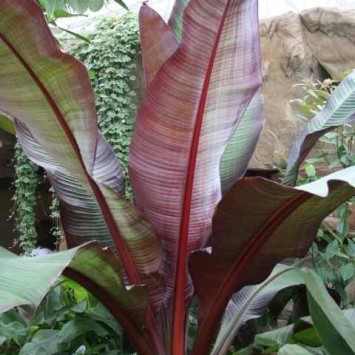
Ensete ventricosum maurelii can produce huge leaves in time; the unusual leaf colour is green suffused with maroon, with blood red stems, making a wonderful foil for other planting. Not a true banana, but closely related with large paddle-shaped leaves, Ensete enjoys full sun and benefits from a sheltered situation so that the leaves do not become shredded by wind. It is a hungry feeder and requires a rich compost and frequent feeding. An excellent plant for growing in a large container which can be moved into a conservatory or greenhouse in winter. It must not be allowed to dry out at the root. Protect from frost in winter if left out in the garden. This banana plant has inedible fruits, but the roots and flower stalks are edible after cooking and used as a source of food in some African countries.
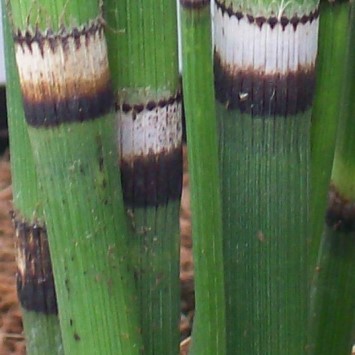
The barred horsetail is a pretty member of the horsetail family, the fleshy, evergreen stems being barred with black rings accentuating the beauty of the foliage. Plant in clumps for striking effect. Will grow to 80 cm tall. Keep well watered. As it can also be grown in the pond, the Barred horsetail is a striking and unusual subject for shallow water planting. Attractive throughout the year, the evergreen stems are valued for providing winter interest. Plant in a medium or large container using aquatic soil covered with pea gravel. An excellent plant for contrasting with flowering subjects. Equisetum reproduces by spores that are grown on cones at the top of the stems.
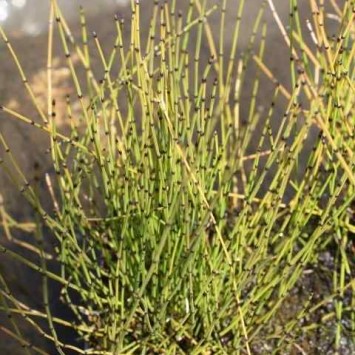
This pretty little plant is a dwarf member of the horsetail family. Leaves are dark green with black rings. Forms pleasing clumps for marginal planting and contrasts nicely with other plants.
An evergreen subject providing winter interest in the pond. This plant also features in our award-winning Lifestyle collection.
An ever-evolving, high impact and versatile range of both traditional and contemporary Garden Plants. This plant is suitable for container and border planting.

This delightful little plant has tiny pink and white daisy flowers. These emerge white and turn pink with yellow centres. Long flowering period from May to October. Dark green linear foliage. Low growing, height to 25cm. Prefers full sun but will grow in in part sun. An excellent edgeing plant for paths. Attractive to bees and butterflies. This Perennial plant is also in our award-winning Kind to Nature collection. It is now widely accepted that gardens are vital for the survival of the UKÔÇÖs wildlife. Gardens make up the majority of the green space in Britain and make significant contribution to the conservation of wildlife. Pollen and nectar rich plants are attractive to many species of insect. Pollen provides a source of protein needed for insect egg production and nectar is a valuable source of carbohydrates needed for energy. Plant your flowers in groups because en masse colour and scent is easier for insects to detect.

A lovely British bog and shallow water plant forming neat clumps of rush-like foliage and numerous erect white-tufted heads of ‘┬Ç┬ÿcotton balls’┬Ç┬Ö. The heads are sometimes used in country districts for making candle wicks. Plant in moist conditions by the pond or in the bog garden, or plant in a medium container in the shallow margins of the pond. Use aquatic soil and top with pea gravel.

Dark green/puple foliage on upright stems. Produces bright lime-yellow flowers that contrast with the dark foliage.
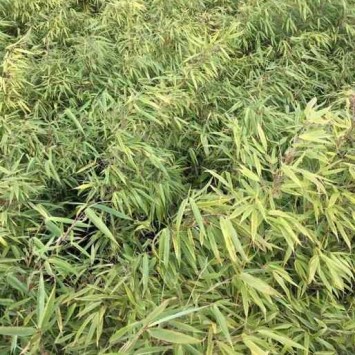
Fargesia is one of the best types of bamboos as it is short and has many small canes, and a much more delicate appearance than more thuggish members of the family.
This non-invasive dwarf bamboo produces masses of new culms with a rusty tinge which then green up and unfurl masses of tiny thin green leaves, which are evergreen so last all year round.
The canes are very slender and thin, so they gently arch over, hence it’s common name of ‘Umbrella Bamboo’.
They are spectacular in big pots on the patio, and an ideal bamboo for small gardens. They also form a neat, dense and easy-care non-trim hedge, reaching 2M and no more over many years.
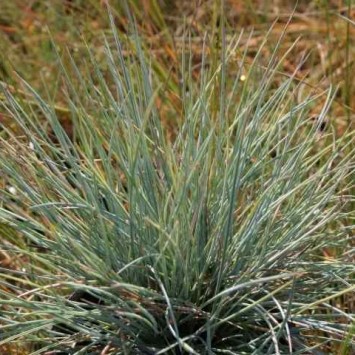
Densely tufted silver blue foliage, a beautiful clump-forming variety forming neat mounds. Hardy plant suited to full or part sun. Very compact, height to 25 cm. New, improved hybrid. Prefers soil with good drainage. Grow as a feature in a patio pot or plant in the garden. Shear off old foliage in late winter. Plants should be divided in spring every 2 ÔÇô 3 years.
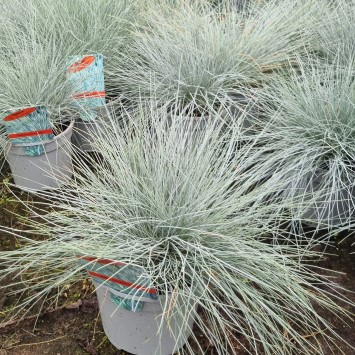
A dense clump forming everygreen with narrow blue-grey green leaves. It produces cream to pale green flower spikes in the summer. Grows to 30 cm.
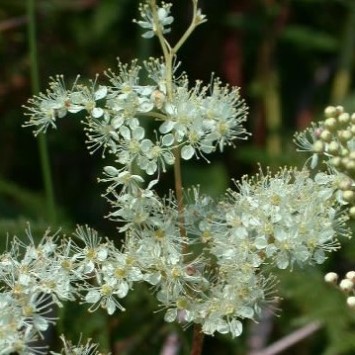
This native plants has showy blooms of creamy flowers. This tall and decorative plant can grow to over 1m.
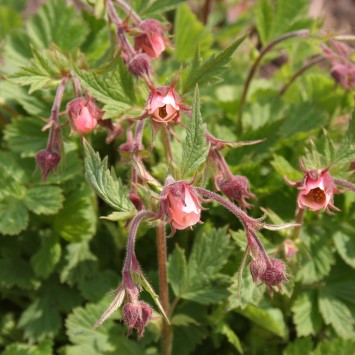
A native plants that gows to 30 cm. Geum Rivale has purplish-pink flowers and strawberry-like leaves.
It is also at home in a woodland garden.

Broad foliage strikingly variegated with white and green. In Spring the young foliage has a purple tint making it very attractive. Forms strong clumps. An excellent backdrop plant. Tolerant of all planting depths from moist soil to 20cm of water. Plant in a medium container using aquatic soil, covering with pea gravel. Trim decaying foliage in Autumn.
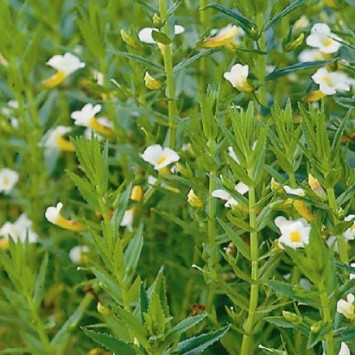
A low growing rafting plant with dainty white flowers and bright green foliage. Excellent for covering planting baskets or carpeting damp borders. Height to 15 cm.
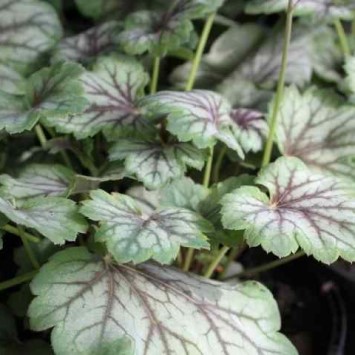
A colourful plant with young leaves emerging purple in spring, maturing to a deep green with bold red to purple veining, overlaid with a touch of light silver. The flower stems are shorter than in other varieties, with creamy white flowers. Best in part shade, makes nice ground cover under shrubs etc.

A clump forming perennial with rounded, ruffled, purple-red leaves. Panicles of white flower open in late spring and early summer. Grows to 25 cm tall.
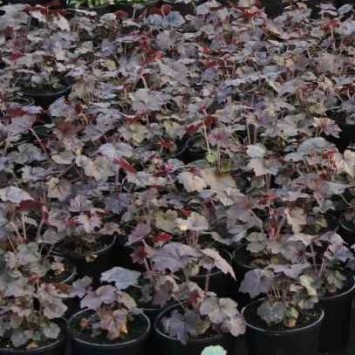
Wonderful North American foliage plant, great ground cover plant. Foliage is purple, leaves are similar in shape to maple. Small pink bell-shaped flowers are borne on long, feathery sprays in early summer. Suited to most soils in full sun or part sun. Height to 45 cm. Evergreen for winter interest. Plant in the garden or grow as a feature in a patio pot. Hardy, clump forming perennial to enjoy year after year. Cut back in early spring to make way for fresh foliage. Propagate by division in autumn.

Wonderful North American foliage plant, great ground cover plant. Foliage is purple, leaves are similar in shape to maple. Small pink bell-shaped flowers are borne on long, feathery sprays in early summer. Suited to most soils in full sun or part sun. Height to 45 cm. Evergreen for winter interest. Plant in the garden or grow as a feature in a patio pot. Hardy, clump forming perennial to enjoy year after year. Cut back in early spring to make way for fresh foliage. Propagate by division in autumn.

A submerged plant growing on fleshy, cylindrical stems that emerge above the water surface. standing straight with whorls of thin, feathery leaves. Submerged green leaves help to increase the oxygen in the pond water. Plant in a medium container using aquatic soil, covering with pea gravel.




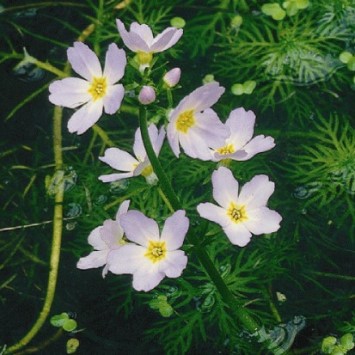
This beautiful British native oxygenating plant has soft, delicate green foliage and emergent pink flowers. Has the immediate benefit of balancing the pond, increasing the oxygen level and helping reduce unsightly algae. Provides a better environment for fish. It can be grown in bog conditions when it produces dry foliage.
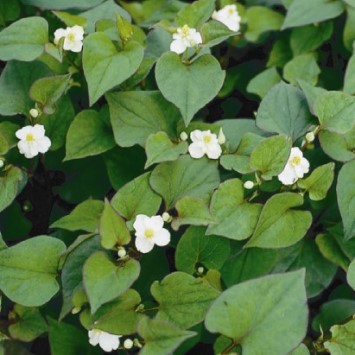
A delightful marginal pond plant that has heart shaped leaves that give off an orange peel scent when crushed. Pretty white flowers are produced from mid to late summer. Plant in the pond margins Zone 2, or in moist conditions by the pond Zone 1.

ÔÇÿFlameÔÇÖ is a very attractive variety of the popular variegated houttuynias. Delightful foliage is multi-coloured in green and yellow with pink edges. Forms pretty clumps by the pond or as a marginal plant. Delightfully aromatic, the leaves give off an orange peel scent when crushed. This marginal is also very suited to the garden border, water well initially and then treat as any other Perennial.
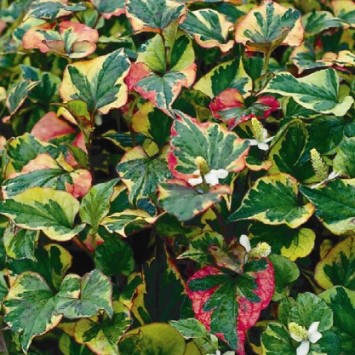
This is a variegated form of the ‘Orange Peel Plant’, so called as the leaves give off the scent of orange peel when crushed. The Harlequin, or Chameleon, plant is grown for it’s wonderful foliage, leaves are variegated in green, yellow and red. It is an excellent plant for the garden; growing to only about 15 cm in height, it compliments taller species, or adds an eye-catching splash of colour along a border or wall bed. Small white flowers are produced in summer. Spreads by runners. Prefers moist soil and benefits from mulch in winter. As a pond plant it can be grown in moist soil at the ponside or in zone 2 as a marginal plant, adding colour and interest to pond planting. This marginal is also very suited to the garden border, water well initially and then treat as any other Perennial.

This dainty little floating plant is a British native. Small white flowers are produced in summer. A graceful floating plant with leaves 2-3 cm across. With the approach of autumn the plant produces terminal buds which drop off and sink to the bottom of the pond where they lie dormant until the following Spring. Floating plants provide cover and habitat for pond creatures.

An attractive little oxygenating plant that can also be grown as a rafting marginal plant. Happy in shallow and deeper water this plant helps to reduce algae and balance the pond.
The underwater leaves give off oxygen, helping to oxygenate the pond and they provide habitat for newts and pond snails.

This oxygenating plant has masses of round green leaves that form floating mats. A hardy, strong-growing, British native plant.
It’s underwater growth helps with oxygenating of the water and provides habitat for pond life.
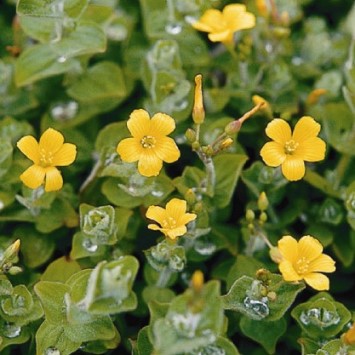
A delightful rafting aquatic plant for the pond margins. A British native plant. Attractive small green leaves with delicate yellow flowers in summer. Provides good habitat for pond creatures.
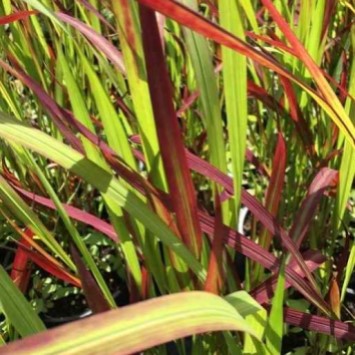
Rubra’ is a deciduous grass forming a loose clump of erect, linear green leaves strongly suffused with deep red, and narrow silvery flower panicles in late summer. Imperata are deciduous, rhizomatous perennial grasses, with flat linear leaves which sometimes are brightly coloured and, occasionally, narrow silvery flowering panicles in late summer

The gorgeous blooms of Iris ensata come in a wealth of different colours and shades“ white, pink, purple, mauve and combinations of these give a glorious display in early summer. They look especially good grown by the pond or in the shallow water margins where they are reflected in the water. Plant in moist conditions at the pondside, or in the pond , Zone 2. The green erect leaves provide excellent habitat for emerging dragonflies and other pond life. This marginal is also very suited to the garden border, water well initially and then treat as any other Perennial.
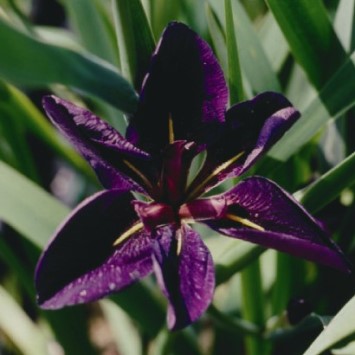
There are five wild species of this large iris orginating from the southern states of America including Louisiana, Texas, Florida and Mississippi Valley. From these five hundreds of different cultivars have been produced over many years all with different flowers, colours, shapes and sizes. For this reason it is unsurprising to find them extremely popular among the cut flower industry.

Plant in sun or part shade. Can be grown in moist soil conditions, or water up to 15 cm deep. These beautiful irises thrive in a wide range of soils from acid to alkaline. Flowers are a stunning purple-black. Height 60 to 100 cm. This plant should be planted at the water depth indicated on the zone diagram.

Our native British water iris; lovely yellow flowers, to 90 cm. in height. Strong growing and adaptable, can be planted up to 60 cm deep. Good water filtration plant; resistant to waterfowl.
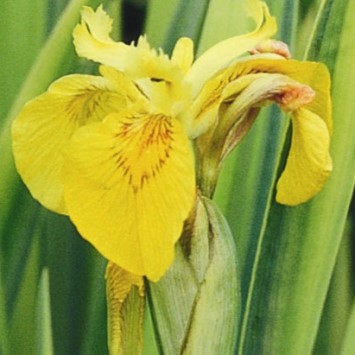
The lovely variegated form of our native yellow iris. In spring the golden yellow and green variegated foliage make this an eye catching plant. Produces rich yellow flowers through the summer months. Provides good habitat for submerged and emergent pond life.

These are lovely, hardy irises for a moist situation or general garden planting, excellent as a ponfside plant. Plant in sun or part shade. Fading foliage can be cut back in late autumn or early spring. This plant is also suitable for the Pondside/Bog garden. Place around the edge of a pond, providing soil is damp and not waterlogged. Alternatively plant in damp areas of the garden.

This American water iris graces the pond margins with purple-blue flowers with white and purple markings and yellow centres. Broad green foliage grows into attractive clumps, leaves and flowers leaning out over the water for lovely reflections. The tall emergent leaves are useful to pond insects such as emerging dragonflies. Plant in a large container using aquatic soil and covering with pea gravel. Trim decaying foliage in autumn.

This American water iris graces the pond margins with flowers of a rich claret colour with white markings and yellow centres. Broad green foliage grows into attractive clumps, leaves and flowers leaning out over the water for lovely reflections. The tall emergent leaves are useful to pond insects such as emerging dragonflies. Plant in a large container using aquatic soil and covering with pea gravel. Trim decaying foliage in autumn.

A hardy, resilient evergreen rush that forms clumps which are attractive to pond life. British native plant, height 60 to 80 cm. Resistant to waterfowl. Plant in sun or semi-shade.

The fascinating twisting and intertwining deep green foliage of the Corkscrew Rush makes this evergreen plant an unusual subject. Can be used as a specimen potted plant indoors or in the conservatory or patio, or planted in the garden in a moist situation. Height 30 to 60cm. The corkscrew rush is also an excellent pond plant, contrasting nicely with other marginal planting. The evergreen foliage provides winter interest in the pond.
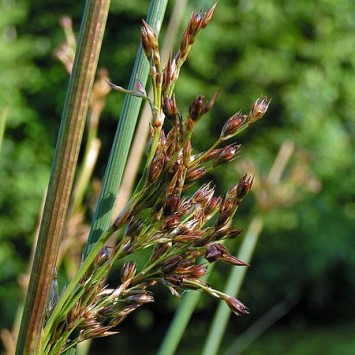
Clump forming british wild native marginal plant with narrow blue-ish/green ornamental looking rush-like leaves.Suitable for ponds, streams and lakes. Height 60 cm. Flowering Time June-August. Water depth 0-2 cm over the soil/crown.

This beautiful clump forming evergreen has linear leaves and tall spikes of shining white saucer flowers. The plant will grow in a sunny or part sunny position, but excels in shade. It is pest and disease resistant. Likes well drained soil; keep moist until established, then water requirement is low. Height 75cm.


This grass like plant provides underwater habitat for pond life such as newts and pond snails. It’s submerged leaves oxygenate the pond.
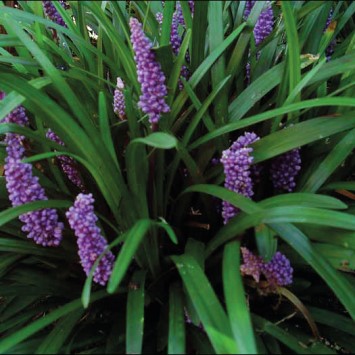
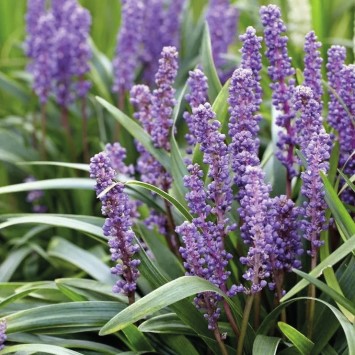
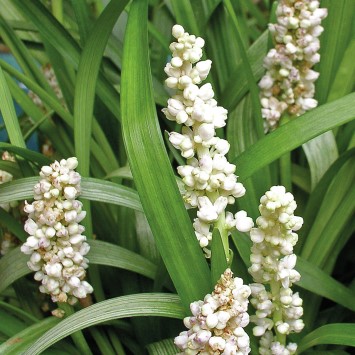
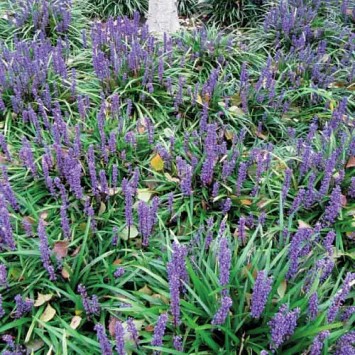

This lovely low and slow growing native forms an underwater mat that provides ideal habitat for pond life. It prefers to live mostly submerged in nutrient-poor freshwater habitats.
Oxygenating plants help reduce algae and balance the pond.
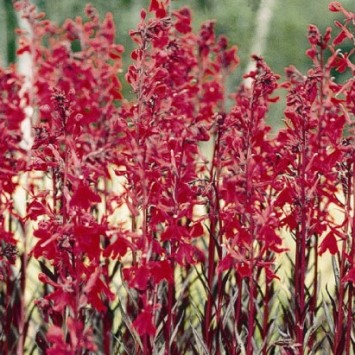
A favourite for the water garden, Lobelia cardinalis has striking deep red foliage and masses of scarlet flowers held on tall stems to 90cm in height. A very eye-catching plant to contrast with the greens of other marginals. Can be planted in the pond up to 15 cm deep or grown in moist conditions at the ponside. Also very popular as a garden plant, the showy foliage and brilliant flowers enhance any border or container. Trim decaying foliage in autumn.

A lovely blue flowering Lobelia. Growing to 60 cm the green stems contrast nicely against the blue-purple flowers. Flowers in the summer.

A lovely red flowering Lobelia. Growing to 60 cm the green stems contrast nicely against the red flowers. Flowers in the summer.
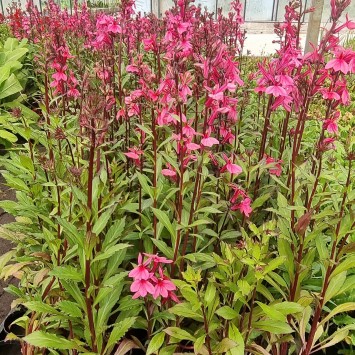
Glorious rose-pink flowers for from July – September. The flower stem grow to 90 cm with rich green foliage and tapering leaves.
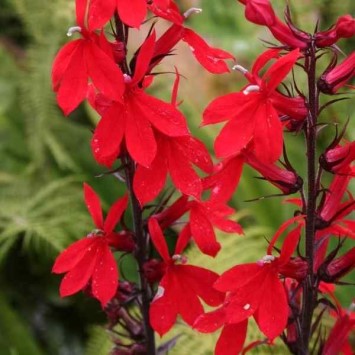
A particularly handsome colour selection from the ‘Fan’ series. The narrow-petalled, scarlet flower spikes are borne on well branched plants from late summer into autumn. Dark bronze-green foliage contrasts perfectly with the vibrant blooms and provides a rather exotic feel.
Generally grown as a biennial, Lobelia speciosa ‘Fan Scarlet’ enjoys a moist, somewhat boggy soil and looks superb planted at the edge of ponds and streams.
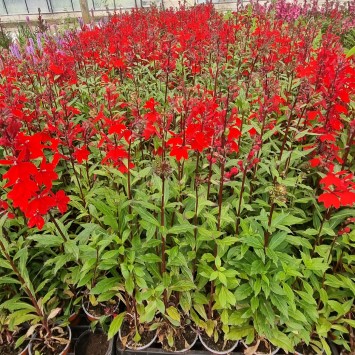
Glorious scarlet red flowers form from July to October. These tall plants can gorw to 90cm with rich green stems contrasting with the red flowers.
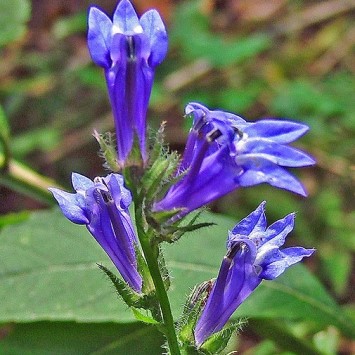
Spokes of blue, tubular flowers on strong stems. Has finely-toothed, lanced-shaped, green leaves.

A pretty Lobelia with bold rosettes of light green foliage, from which spring leafy stems bearing a bright profusion of white flowers. Plant in moist conditions by the pond or in a damp situation in the garden. CAUTION All parts of this plant are poisonous if ingested. This marginal is also very suited to the garden border, water well initially and then treat as any other Perennial.
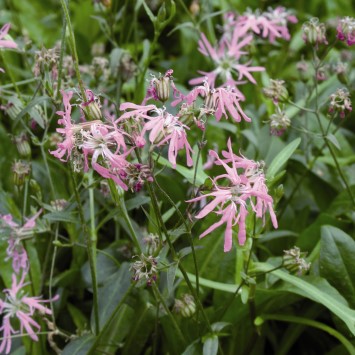
A delightful British native ponside plants. It produces masses of pink flowers, with a regged look to the petals.
Excellent for a naturalised water meadow eddect by ponds and streams.

Pretty yellow flowers are produced in abundance, backed by the lush green foliage. This creeping plant is ideal for planting round the edges of containers, or on the pondside to mask the pond edge as it creeps over into the water. Also useful to plant into niches by a stream or waterfall. A very adaptable and hardy native British plant. This marginal is also very suited to the garden border, water well initially and then treat as any other Perennial.

Pretty yellow flowers are produced in abundance, backed by the lush golden-green foliage. This creeping plant is ideal for planting round the edges of containers, or on the pondside to mask the pond edge as it creeps over into the water. Also useful to plant into niches by a stream or waterfall. Can be planted in a medium or large container with other plants, using aquatic soil covered with pea gravel, and placed on the marginal shelf. Trim decaying foliage in autumn. This marginal is also very suited to the garden border, water well initially and then treat as any other Perennial.
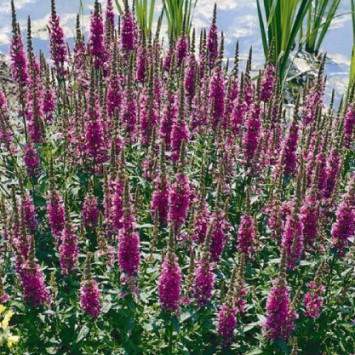
A showy native plant with beautiful long plumes. Found widely across Britain. Strong grower which seeds freely. This marginal is also very suited to the garden border, water well initially and then treat as any other Perennial.

Also known as the nardoo plant, foliage resembles a four leaved clover. The attractive green leaves will grow submergered or in bog conditions. Upper leaves emerge above the water surface; belongs to the fern family.
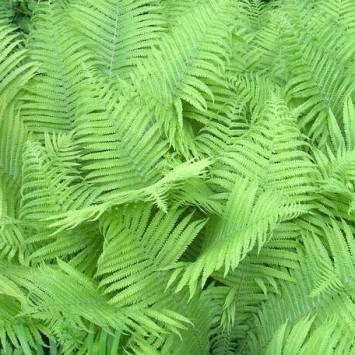
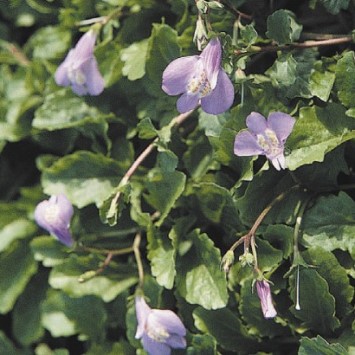
A low growing, creeping plants that produces a profusion of blue flowers. ideal for carpeting planting shelves or raised baskets.
Excellent as a pond edge plant to cover exposed liner etc. Keep in moist conditions.
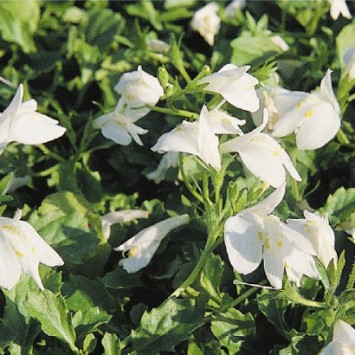
A low growing, creeping plants that produces a profusion of blue flowers. ideal for carpeting planting shelves or raised baskets.
Excellent as a pond edge plant to cover exposed liner etc. Keep in moist conditions.

The lovely aroma of water mint is given off when the leaves are brushed. This is a British native pond plant, a great plant for any pond. Pretty flowers are a delicate mauve, appearing in summer. Water mint is a rafting plant, spreading out from the pond margins to form a floating mat that gives cover to fish and habitat for pond ceatures. The fibrous roots dangle into the water where they absorb toxins and pond waste, making mint a good water filtration plant. Easily controlled by cutting back when required.
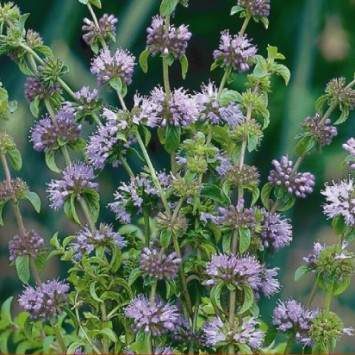
A dwarf member of the mint family, this attractive plant is ideal for carpeting pond edges and planting shelves, produces masses of mauve-pink flowers in late summer. Delightfully aromatic, foliage gives off a sweet minty scent when brushed.
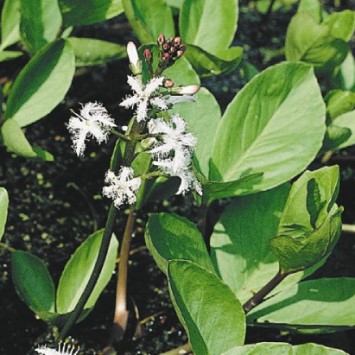
The Bog bean is a delightful British native pond plant. Flowers emerge above the foliage with pink buds breaking open into feathery white blooms. A pretty plant that grows out from the side of the pond in a floating raft, creating ideal habitat for pondlife. Plant in a medium container using aquatic soil, covering with pea gravel.
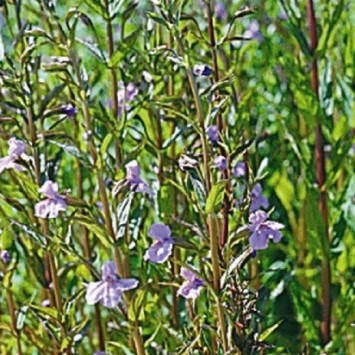
A tall mimulus, stems reaching to 60 cm bearing a profusion of soft violet blue flowers. The pretty serrated leaves are small in shining jade-green, complimenting the flowers. The tall emergent leaves are useful to pond insects such as emerging dragonflies. Plant in up to 15 cm of water at the pond margin in a medium container using aquatic soil and covering with pea gravel.
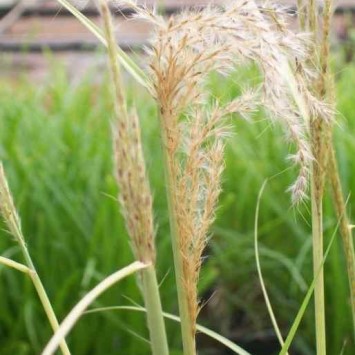
Adagio’ is a an elegant, clump-forming deciduous grass to 1.25m tall, with long, narrow, grey-green, arching leaves that turn orange and yellow in autumn. Pink-tinged, tassel-like flower heads in summer turn creamy-white in autumn. Miscanthus can be deciduous or evergreen grasses with tufted or spreading habit, erect stems bearing arching, linear leaves and terminal panicles of silky spikelets in late summer or autumn
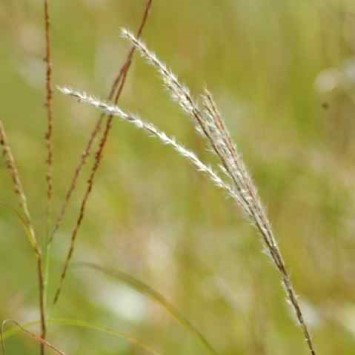
Gracillimus’ is a compact, clump-forming deciduous grass with narrow, arching leaves with white midribs, and silky, purple-tinged, curled flower panicles in late summer. Miscanthus can be deciduous or evergreen grasses with tufted or spreading habit, erect stems bearing arching, linear leaves and terminal panicles of silky spikelets in late summer or autumn
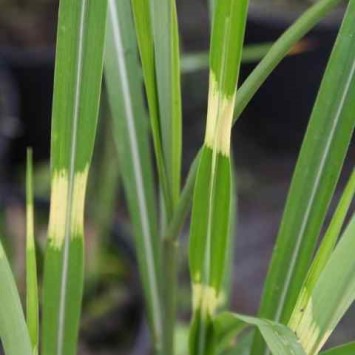
A dwarf selection of Miscanthus, also called Japanese Silver Grass. This forms a midsized mound of green leaves with attractive horizontal banding of creamy yellow. Shorter than regular Zebra Grass, this is well-suited to smaller gardens or growing in containers. Plumes are deep pink to red and appear from late summer into the autumn, gradually turning silver for the winter. Foliage dries and turns almond in late fall, usually remaining attractive all winter long. Trim back to 4 inches in late winter.
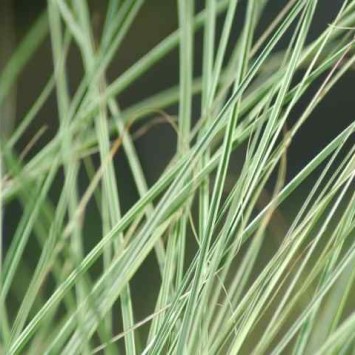
Morning Light’ is a compact deciduous perennial with narrow leaves finely edged with white, and pink-tinged panicles of flowers in autumn. Miscanthus can be deciduous or evergreen grasses with tufted or spreading habit, erect stems bearing arching, linear leaves and terminal panicles of silky spikelets in late summer or autumn
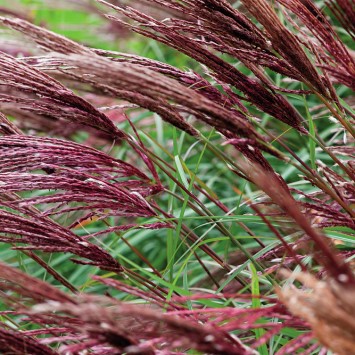
A clump-forming, deciduous grass that grows to 1.5 m tall. Narrow, arching leabes turn yellow in the autumn and fade to pale brown in the winter. The feathery flowers open a deep red, fade to silver in the autumn and remain open over winter.
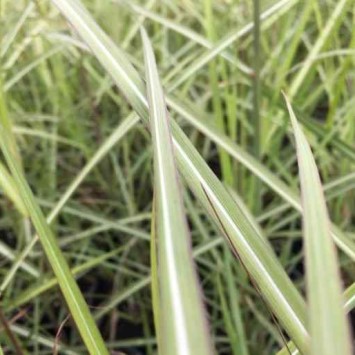
Kleine Silberspinne’ forms a compact clump of arching, narrow leaves with white midribs, and feathery reddish flower heads to 1.2m tall in late summer, soon turning pale brown and lasting well into winter. Miscanthus can be deciduous or evergreen grasses with tufted or spreading habit, erect stems bearing arching, linear leaves and terminal panicles of silky spikelets in late summer or autumn

Strictus’ is a compact, clump-forming deciduous grass with erect, rather spiky foliage cross-banded with yellow, and crinkly silver flowering plumes to 2m tall in mid autumn. Miscanthus can be deciduous or evergreen grasses with tufted or spreading habit, erect stems bearing arching, linear leaves and terminal panicles of silky spikelets in late summer or autumn.
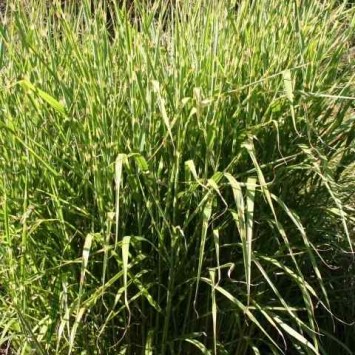
A tall and graceful plant. Miscanthus belongs to the family of grasses. This large upright variety can grow to 1.2m in height. The eyecatching clumps are topped with wonderful feathery plumes in late summer which last right through to spring, providing interest and movement in winter. This variegated form has strong, broad foliage splashed horizontally with bold yellow bars.
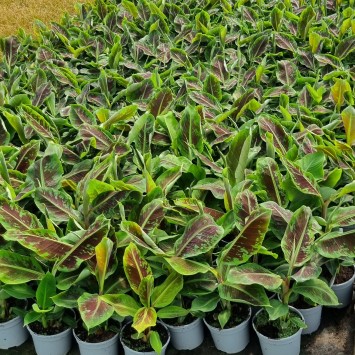

Musa basjoo green has striking foliage – displaying large bright green leaves that arch upwards from a main stem. A fantastic architectural banana plant will create a great impact in any garden! It will bring a tropical atmosphere to your garden. The flowers are creamy yellow with large brown bracts and are arranged on a pendant spike.
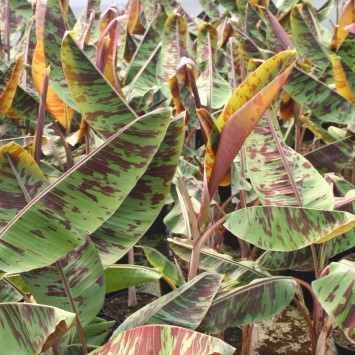
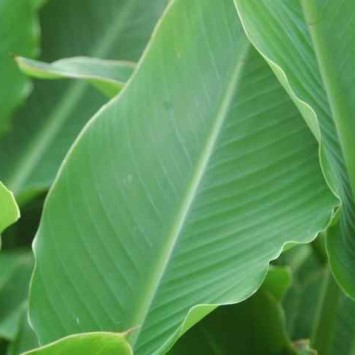
This most unusual plant is very striking in appearance and makes a great talking point. The large golden lotus flower is spectacular; resembling an artichoke in strucure, it can last for several months. The plant requires rich soil and plenty of water, but can dry out between waterings. Large, green banana plant leaves have red blotches. An excellent plant for growing in a large container which can be moved into a conservatory or greenhouse in winter. Once the plant is over 2 years old it can be left growing out in the garden with some protection.
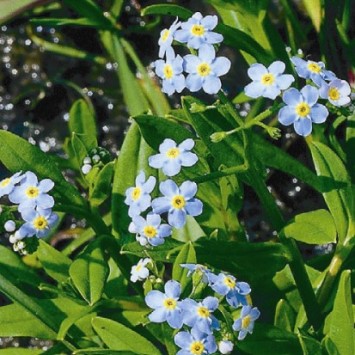
The Water forget-me-not is an ideal plant for any type of pond. Fresh green foliage spreads into rafting clumps around the pond margins with masses of tiny blue flowers. Rafting plants provide cover and habitat for pond creatures.
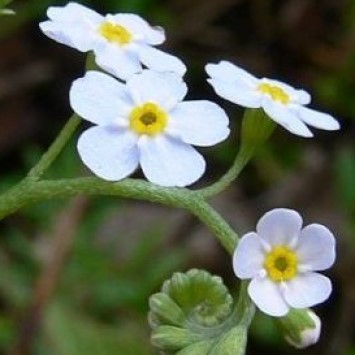
This is the white flowered form of the old favourite Water forget-me-not. Bright green foliage contrasts with the pretty white flowers. Myosotis is a rafting plant, growing out from the pond margin in a floating raft which provide cover and habitat for pond creatures.

An attractive oxygenating plant with both submerged and emergent folaige. Adaptable to shallow and deeper water this myriopyllum helps reduce algae and balance the pond.
Underwater growth provides habitat for pond life such as newts and water snails.

An attractive oxygenating plant with both submerged and emergent foliage. Propium is adaptable to shallow and deeper water.
Helps to reduce algae and balance the pond while providing habitat for pond life such as newts and water snails.

This variety of parrots feather has attractive red stems which contrast with the bright green whorls of feathery leaves. Like other myriopyllums ‘Red Stem’ helps to reduce aglae and balance the pond.
‘Red Stem’ underwater growth provides habitat for pond life such as newts and water snails as well as oxygenating the water.

This medium waterlily offers large, double pink flowers throughout summer. Dark green leaves appear in early spring and will cover an area of apprx. 70 – 100cm, once established. Submerge waterlily at a shallower depth for 3-4 weeks, then place at required depth (see label) KEEP AWAY FROM MOVING WATER. Feed with slow release fertiliser in June.
Planting Depth – 30 – 70cm
Flowering Time – June – September
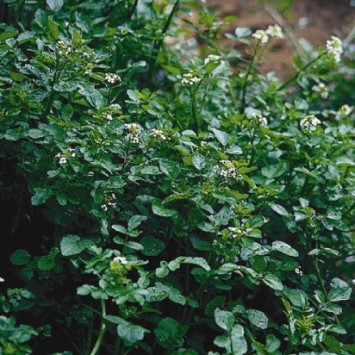
A delightful British native water plant, watercress has bright green leaves and white flowers. This pretty rafting plant with hollow stems creates a floating mat on the pond, giving cover for fish and good habitat for many kinds of pond creatures. Plant in full or part sun. Height to 15 to 30 cm. Plant in zone 2. Good for waterfalls and filters. An excellent plant for water filtration, watercress absorbs toxins improving water quality in the pond. Easily cut back. Propagate by division in spring.
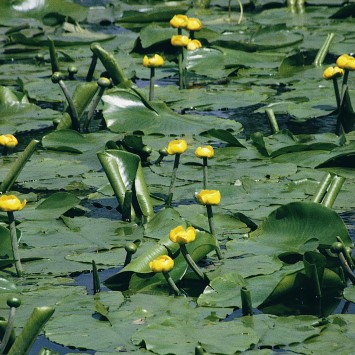
This native deep water plant plant is sometimes referred to as the ‘Yellow pond lily’, but it is not a true water lily. The common name, Brandy bottle, refers to the strong alcaholic smell of the flowers. Flowers are yellow and held above the water; the large floating leaves are bright green, providing shade for the pond and habitat for pond creatures. The nuphars are more adaptable than true water lilies; they will grow in sun or shaded situations and thrive in still or running water. They can be planted up to 2.5 metres deep. Best planted in a large planting basket and cut back every couple of years as they can spread if not controlled.
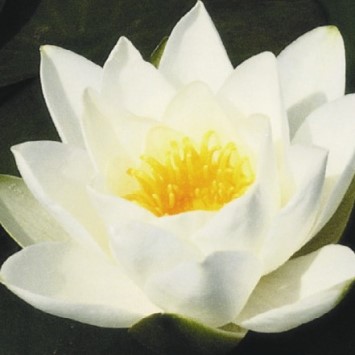
This large, native waterlily offers white blooms throughout summer. Green leaves appear in early spring and will cover an area of apprx. 80 – 150cm, once established. Submerge waterlily at a shallower depth for 3-4 weeks, then place at required depth (see label) KEEP AWAY FROM MOVING WATER. Feed with slow release fertiliser in June.
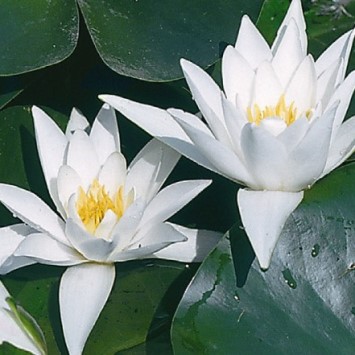
This medium waterlily offers elegant white flowers throughout the summer. Rich purple leaves turning green appear in early spring and will cover an area of apprx. 60 -100cm, once established. Submerge waterlily at a shallower depth for 3-4 weeks, then place at required depth (see label) KEEP AWAY FROM MOVING WATER. Feed with slow release fertiliser in June.
Planting Depth – 40 – 100cm
Flowering Time – June – September
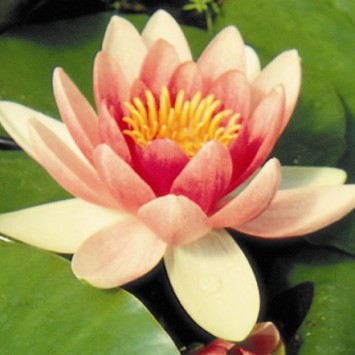
This large waterlily offers wonderful rose-red flowers throughout the summer. Green leaves appear in early spring and will cover an area of apprx. 70 – 120cm, once established. Submerge waterlily at a shallower depth for 3-4 weeks, then place at required depth (see label) KEEP AWAY FROM MOVING WATER. Feed with slow release fertiliser in June.
Plant Depth – 40 – 120cm
Flowering Time – June – September
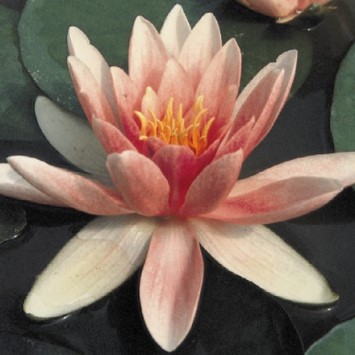
This large waterlily offers attractive wine-coloured flowers throughout summer. Green and red leaves appear in early spring and will cover an area of apprx. 90 – 150cm, once established. Submerge waterlily at a shallower depth for 3-4 weeks, then place at required depth (see label) KEEP AWAY FROM MOVING WATER. Feed with slow release fertiliser in June.
Plant Depth – 40 – 100cm
Flowering Time – June – September
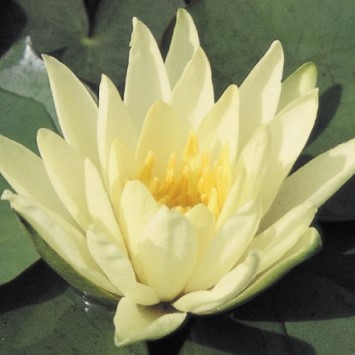
This large waterlily offers canary-yellow flowers throughout summer. Green leaves appear in early spring and will cover an area of apprx. 70 – 100cm, once established. New plants sometimes grow from the leaves. Submerge waterlily at a shallower depth for 3-4 weeks, then place at required depth (see label) KEEP AWAY FROM MOVING WATER. Feed with slow release fertiliser in June.
Planting Depth – 50 – 150cm
Flowering Time – June – September
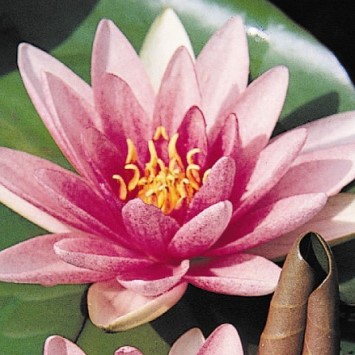
This large waterlily offers beautiful large, rose-red flowers throughout summer. Green and red leaves appear in early spring and will cover an area of apprx. 80 – 100cm, once established. Submerge waterlily at a shallower depth for 3-4 weeks, then place at required depth (see label) KEEP AWAY FROM MOVING WATER. Feed with slow release fertiliser in June.
Plant Depth – 40 – 100cm
Flowering Time – June – September

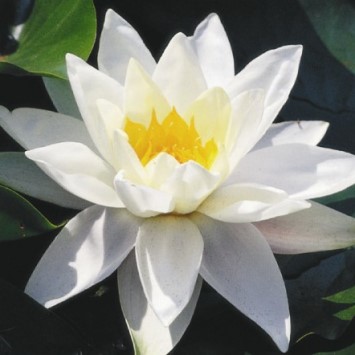
This large waterlily is suitable for larger ponds. Offering large white flowers throughout summer. Dark green leaves appear in early spring and will cover an area of apprx. 90 – 180cm, once established. Submerge waterlily at a shallower depth for 3 – 4 weeks, then place at required depth (see label) KEEP AWAY FROM MOVING WATER. Feed with slow release fertiliser in June.
Plant Depth – 50 – 150cm
Flowering Time – June – September

This medium/large waterlily offers beautiful large soft-pink blooms throughout summer and in to autumn. Green leaves appear in early spring and will cover an area of apprx. 90 – 130cm, once established. Submerge waterlily at a shallower depth for 3-4 weeks, then place at required depth (see label) KEEP AWAY FROM MOVING WATER. Feed with slow release fertiliser in June.
Plant Depth – 50 – 100cm
Flowering Time – June – October
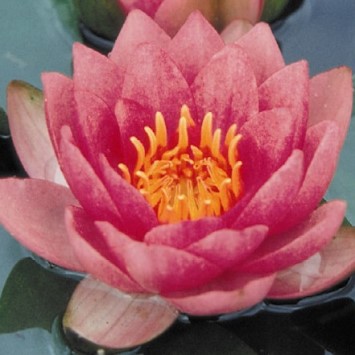
James Brydon’ is an aquatic perennial with rounded, dark purple-blotched, bronze-green leaves and cupped, carmine-red flowers 12cm in width, with orange stamens
This medium waterlily offers striking, cup-shaped, carmine-red flowers throughout summer. Green/maroon flecked leaves appear in early spring and will cover an area of 70 – 100 cm, once established. Submerge waterlily at a shallower depth for 3-4 weeks, then place at required depth (see label) KEEP AWAY FROM MOVING WATER. Feed with slow release fertiliser in June.
Planting Depth – 30 – 70cm
Flowering Time – June – September
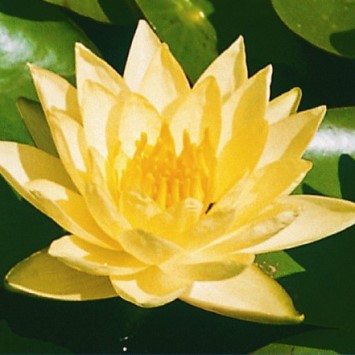
This medium waterlily offers wonderful yellow flowers throughout the summer. Green leaves appear in early spring and will cover an area of apprx. 70 – 100cm, once established. Submerge waterlily at a shallower depth for 3-4 weeks, then place at required depth (see label) KEEP AWAY FROM MOVING WATER. Feed with slow release fertiliser in June.
Planting Depth – 30 – 90cm
Flowering Time – June – September
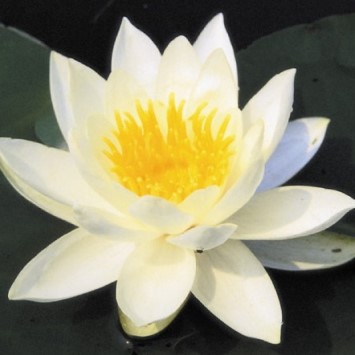
This medium waterlily offers beautiful white flowers throughout summer. Dark green leaves appear in early spring and will cover an area of apprx. 70 – 100cm, once established. Submerge waterlily at a shallower depth for 3 – 4 weeks, then place at required depth (see label) KEEP AWAY FROM MOVING WATER. Feed with slow release fertiliser in June.
Planting Depth – 30 – 90cm
Flowering Time – June – September
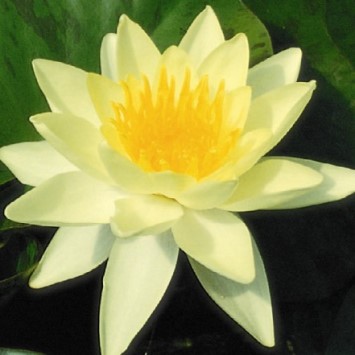
This medium waterlily offers wonderful golden-yellow flowers throughout summer. Mottled olive green/red leaves appear in early spring and will cover an area of 70 – 100cm, once established. Submerge waterlily at a shallower depth for 3-4 weeks, then place at required depth (see label) KEEP AWAY FROM MOVING WATER. Feed with slow release fertiliser in June.
Planting Depth – 40 – 90cm
Flowering Time – June – September

This large waterlily offers large pale pink flowers throughout summer. Green leaves appear in early spring and will cover an area of apprx. 80 – 120cm, once established. Submerge waterlily at a shallower depth for 3-4 weeks, then place at required depth (see label) KEEP AWAY FROM MOVING WATER. Feed with slow release fertiliser in June.
Planting Depth – 50 – 120cm
Flowering Time – June – September

This large waterlily offers beautiful deep pink flowers throughout summer. Dark green leaves appear in early spring and will cover an area of apprx. 90 – 120cm, once established. Submerge waterlily at a shallower depth for 3-4 weeks, then place at required depth (see label) KEEP AWAY FROM MOVING WATER. Feed with slow release fertiliser in June.
Planting Depth – 30 – 100cm
Flowering Time – June – September
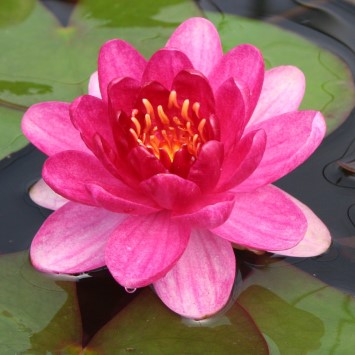
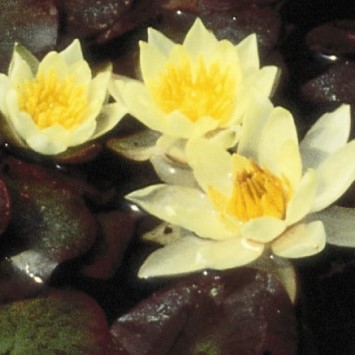
A true miniature waterlily with wonderful yellow flowers. One of the most popular miniature waterlilies.
Suited to a tub or small pond. Maximum depth of around 20cm, can spread to 60cm.

A miniature waterlily with pale rose flower that turn a deeper red as they mature. Suitable for a shallow area of the pond up to 45 cm deep. Needs still water in a sunner position.
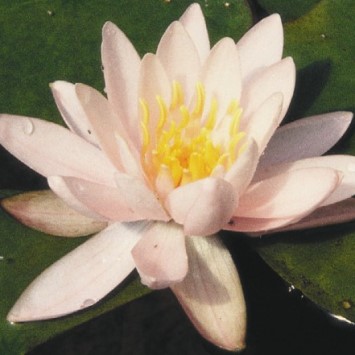
This large waterlily offers fragrant pink flowers throughout the summer. Dark green leaves appear in early spring and will cover an area of apprx. 80 – 140cm, once established. Submerge waterlily at a shallower depth for 3-4 weeks, then place at required depth (see label) KEEP AWAY FROM MOVING WATER. Feed with slow release fertiliser in June.
Plant Depth – 30 – 70cm
Flowering Time – June – September

Floating heart has masses of small round leaves and pretty yellow flowers. A deep water plant that grows up from the deeper part of the pond and grows into a floating mat. This provides shade for the pond and cover for water creatures. Trim back as necessary to restrict growth.

This lovely water plant has pink, white and green frilly foliage that resembles compact carrot tops. It produces small umbels of white flowers in summer, but is prized for the attractive foliage which is at its best in spring and autumn when the pink colouration is more prominent. Makes a lovely backdrop to other marginals and can make great ground cover in wet areas. Forms underwater rafts of roots which provide good habitat for pond creatures. Plant in a medium or large container using aquatic soil covered with pea gravel and place on the marginal shelf, or plant in the stream or by the waterfall.
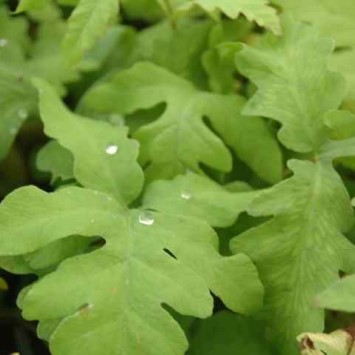
A lovely fern with pretty arching foliage of finely divided triangular fronds. Maturing to pale green from pinkish-bronze in spring. Does best in a sheltered moist border or a shaded patio container; keep moist at all times. This plants prefers light dappled shade; the fronds will scorch if exposed to too much sun.
This plant is also suitable for the Pondside/Bog garden. Place around the edge of a pond, providing soil is damp and not waterlogged. Alternatively plant in damp areas of the garden.
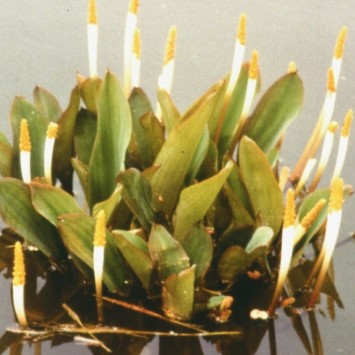
Orontium is a deep marginal plant with striking yellow pokers and lush velvety leaves. Very unusual and an excellent subject for pond planting. Will grow in water 6 to 45 cm deep. Will grow in part sun to full shade. Ideal for deeper areas of the pond where other marginals may fail. Plant in a large planting basket to accomodate the roots which require a good depth of soil.
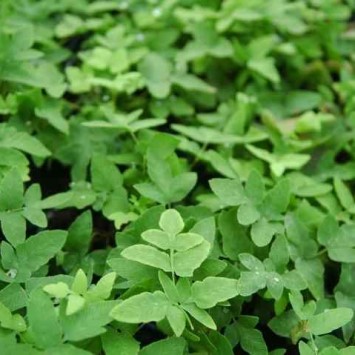
O. regalis is a robust deciduous fern forming a large clump of bipinnate fronds to 2.5m in height, bearing rusty-brown spore-bearing pinnae at the tips; foliage turns attractive red-brown in autumn. Osmunda are medium-sized to large deciduous ferns, usually from wet places, with erect or arching, pinnate or bipinnate fronds, bearing spores either on modified pinnae or on separate, smaller fronds. This plant is also suitable for the Pondside/Bog garden. Place around the edge of a pond, providing soil is damp and not waterlogged. Alternatively plant in damp areas of the garden.
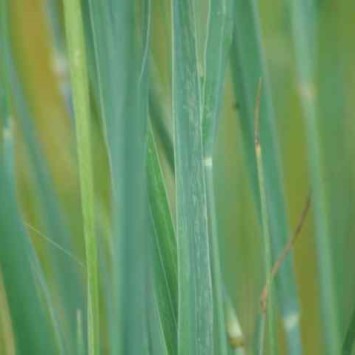
Northwind is a deciduous, perennial grass, to 1.5m tall, forming an upright clump of flat, linear, blue-green leaves turning yellow and orange in autumn. Large airy sprays of tiny pink and green flowers are produced in late summer and persist into mid-autumn.
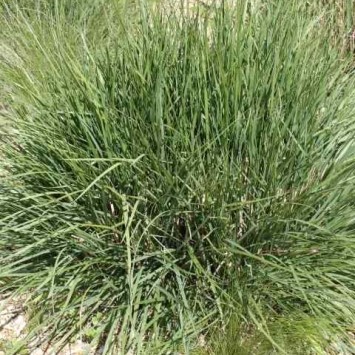
Upright foliage is glaucus blue-green, a sturdy plant that stands up well though the winter months. Attractive narrow plumes are held erct above the foliage. Stems never lean or flop, even in heavy rains. Foliage turns wonderful shades of yellow/orange in autumn.

Fountain grass can be annual or perennial, evergreen or deciduous. This pennisetum forms a dense clump of narrow green leaves to over 1 metre, turning pale brown in winter, with tall stems bearing softly hairy, oblong, green to purple inflorescences in late summer.
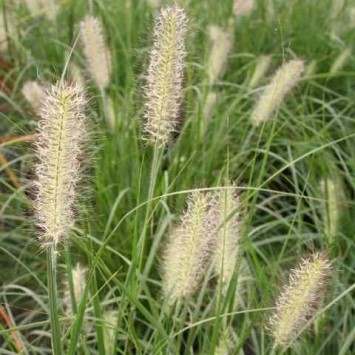
Narrow leaves are mid-green, turning golden-yellow in autumn. A fountain of flowers grow up from a cascading mound of basal foliage. Flowers are creamy white, resembling large foxtails. Compact variety, height to 1m. Plant in the garden or grow as a feature in a patio container. Trim back old foliage in spring.
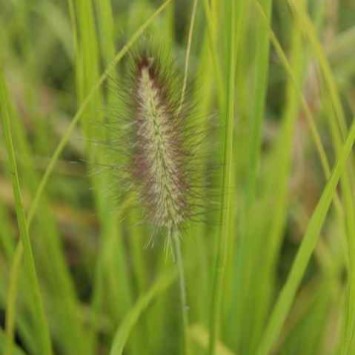
Narrow leaves are golden-green, turning golden-yellow in autumn. A fountain of flowers grow up from a cascading mound of basal foliage. Flowers are creamy white, resembling large foxtails. Compact variety, height to 1m. Plant in the garden or grow as a feature in a patio container. Trim back old foliage in spring.
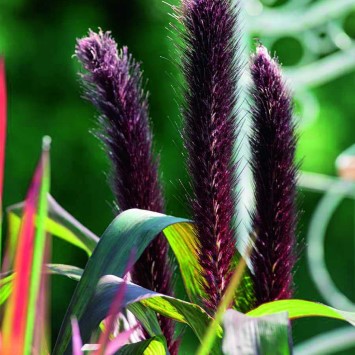
A fast growing upright annual that grows to 1.5 m tall. It forms a large clump of strap-shaped, dark green leaves that turn dark purple in the summer.

Red Head is a beautiful Pennisetum with narrow, deep-green leaves that turn gold in the autumn. It is topped with large bottlebrush like flowers which open red and fade to brown. Plant in a sunny spot. Grows to 1m in height.
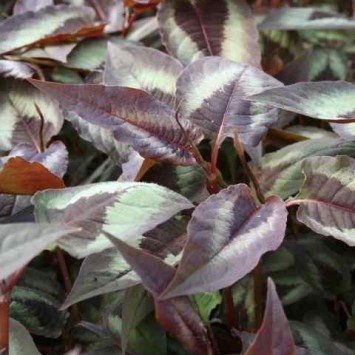
Red Dragon is grown for it’s wonderful dark maroon red foliage. The leaves are sharly pointed, dark in the centre and mottled with white to the edge. A profusion of small white flowers are produced in August and September. They grow well in most soils and form a habndsome clump up to 50 cm in height. An excellent companion plant for golden grasses, accentuating the colours of the foliage. A great subject for patio pots or complimenting garden planting schemes.
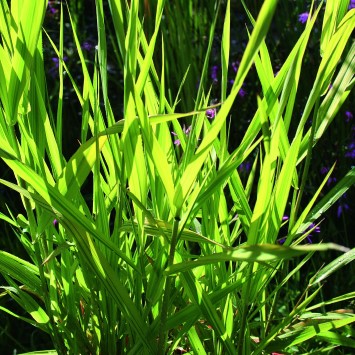
A compact perennial grass that forms clumps with upright stems. It has bright green narrow leaves which are striped with creamy-yellow. flowers in summer with pale green narrow panicles. Grows to 70 cm tall.
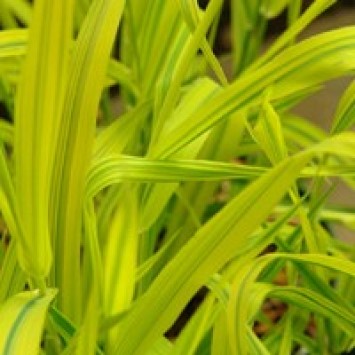
This vigorous perennial grass forming an extensive colony of erect stems to 60cm tall, bearing narrow leaves boldly dark green, and narrow pale green flowering panicles in summer. Commonly known as Gardener’s Garters, Phalaris has a vigorous habit and benefits from plenty of space to spread. This versatile plant is as much at home in the margins of a pond, providing it is not planted too deep. We recommend no more that 5-10cm of water above the top of the pot. Spectacular in large drifts at the edge of lakes and sizable ponds.
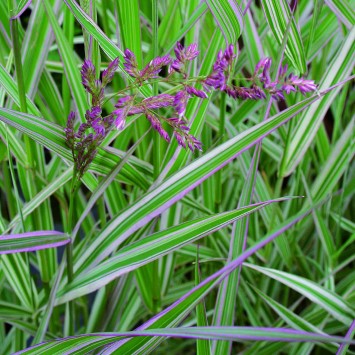
A vigorous grass that produces upright stems that grow to 1 m tall. The stems produce narrow pale green leaves with broad white stripes. It produces pale green narrow panicles in summer.
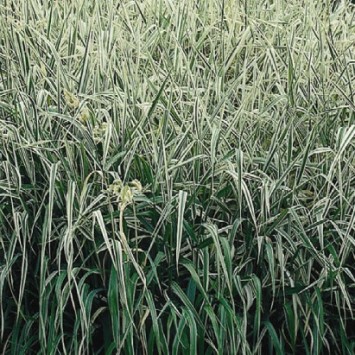
This beautiful aquatic grass, boldly variegated with longitudinal stripes of green and white, is a striking subject for marginal or pondside planting. The variegated foliage adds interest to the pond throughout the growing season and compliments the green foliage of other water plants. Allow it to grow into bold clumps for dramatic effect. Plant in a medium or large container using aquatic soil covered with pea gravel and place on the marginal shelf, or plant in moist conditions at the pondside or by the stream or waterfall.

A tall reed with graceful, feathery flower plumes. An excellent water filtration plants that grows dense mats of roots.
Useful for binding banks and providing nesting cover for waterfowl.

Pilularias green leaves are short and brstle shaped. It will grow in water up-to 10cm deep.
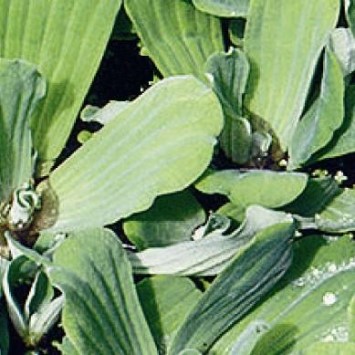
This popular floating plant has lettuce shaped leaves that are soft and hairy. It has fine roots that provide cover for small fish and pond life.
Pistia sends out runners foring young plants. Give winter protection as it is not frost hardy.
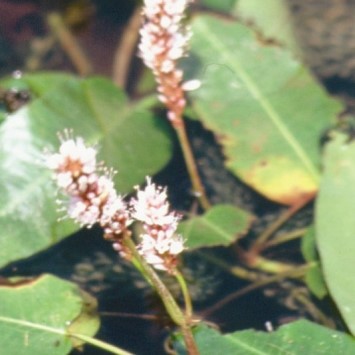
A marginal plant that is happy in water up-to 80cm deep. This native polygonum has grossy dark green strap-like leaves and pink fluffy flowers. Can grow to 60cm tall.
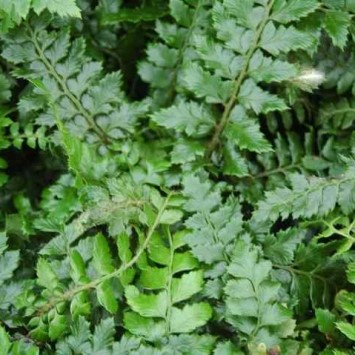
This fern has stiff, erect lance-shaped fronds that form a shuttlecock shape. The evergreen folaige is dark green, new fronds are covered in golden hairs as they unfurl.
Suited to humus rich, moist but well drained soil in full or part-shade. Can grow to 70 cm tall.
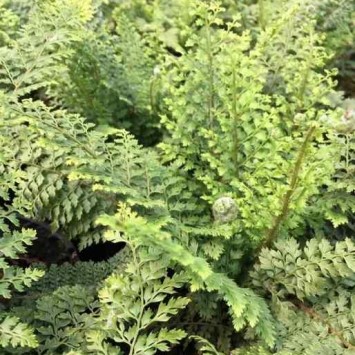
This German fern selection forms a low mound of fine-textured feathery fronds, almost with the appearance of curly parsley. It performs best in soils that remain evenly moist, and slightly on the acidic side. Fronds remain evergreen in mild winter regions. Attractive in a shady rock garden, along the edge of a border or in containers. Remove any brown fronds in spring. This plant is also suitable for the Pondside/Bog garden. Place around the edge of a pond, providing soil is damp and not waterlogged. Alternatively plant in damp areas of the garden.
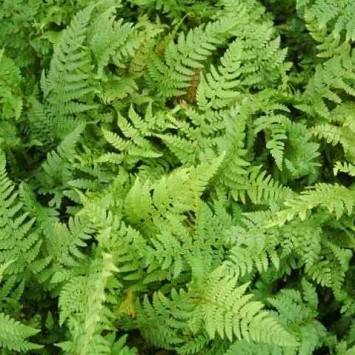
P. setiferum is a tufted evergreen fern to 1.2m in height, with rosettes of soft textured, lance-shaped mid-green fronds, the stalks with prominent orange-brown scales. Polystichum are mostly evergreen or semi-evergreen ferns, with short stout rhizomes and pinnately divided fronds in neat shuttlecock-like rosettes. This plant is also suitable for the Pondside/Bog garden. Place around the edge of a pond, providing soil is damp and not waterlogged. Alternatively plant in damp areas of the garden.
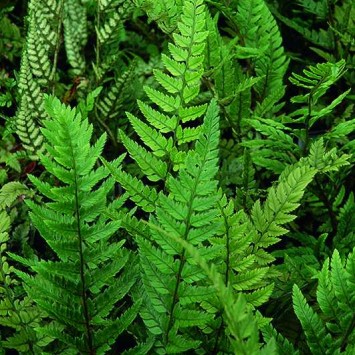
A small evergreen fern that grows to 45 cm. It has erect narrow lance-shaped fronds.
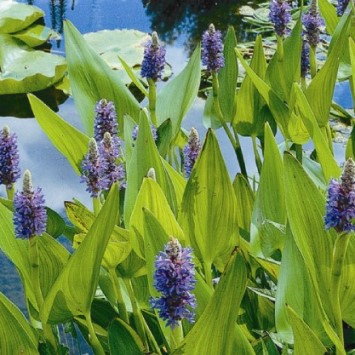
A favourite pond plant with handsome green spear shaped leaves and poker heads of small blue flowers. Forms delightful clumps at the pond margins. Tall emergent marginals provide good habitat for pond insects such as emerging dragonflies. Grows 60 to 80 cm in height.

A favourite pond plant with handsome green spear shaped leaves; free flowering with poker heads of small white flowers. Forms delightful clumps at the pond margins. Tall emergent marginals provide good habitat for pond insects such as emerging dragonflies. Grows 60 to 80 cm in height.

Taller than the other varieties, this Pickerel plant has rich olive green lance shaped leaves enhanced by blue poker heads of flowers. A favourite pond plant that can be planted up to 40 cm deep, making it a useful marginal to plant in deeper areas where other marginals may not thrive. The pretty blue flowers are attractive to pollinating insects. Plant in a medium or large container using aquatic soil covered with pea gravel. Trim decaying foliage in autumn.
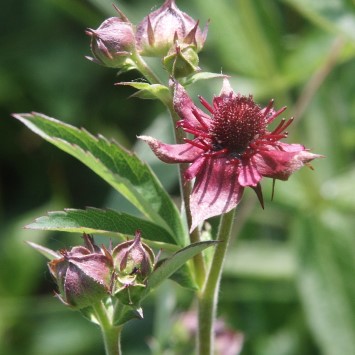
A British native plants that grows naturally alongside ponds and streams. It produces strawberry-like leaves and red star-shaped flowers in early summer. These flowers are very attractive to butterflies and bees.
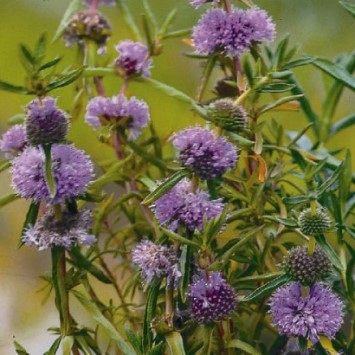
A dainty marginal plant, having slender leaves and blue flowers. Flowers are borne in whorls up the stems, height to 40 cm. Aromatic ÔÇô gives off a delicate mint scent when leaves are brushed.

A dainty marginal plant, having slender leaves and white flowers. Flowers are borne in whorls up the stems, height to 40 cm. Aromatic ÔÇô gives off a delicate mint scent when leaves are brushed.
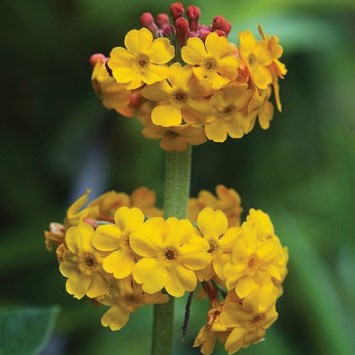
Primula bulleyana is a semi-evergreen that grows to 60cm. It has rosettes flowers on erect stems with orange-yellow flowers.
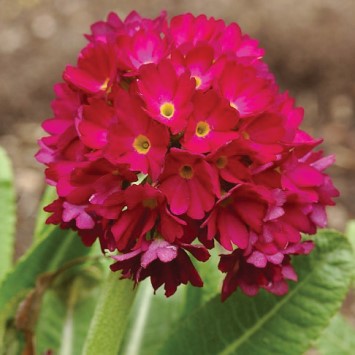
A favourite for pondside planting, these bog primulas give a marvellous show of flowers through the spring. The drumstick primula, also known as the Himalayan primrose, has a range of colours from white, pink and red to mauve. The flowers are said to be eaten in their native habitat as a salad. They are suited to damp shady areas. Plant in clumps or drifts for best effect. Self seeded young plants can be transplanted in spring. This plant is also suitable for the Pondside/Bog garden. Place around the edge of a pond, providing soil is damp and not waterlogged. Alternatively plant in damp areas of the garden.
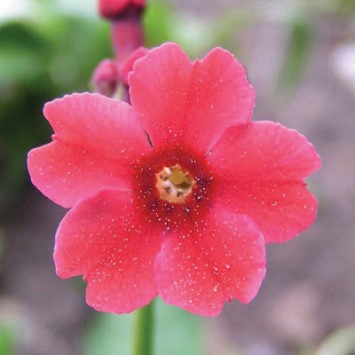
A favourite for pondside planting, this bog primula is a candelabra variety, having successive whorls of beautiful crimson flowers borne on tall stems. It provides a marvellous show of flowers through early summer. Primulas are suited to damp shady areas, looking lovely planted by water. Plant in clumps or drifts for best effect. Self seeded young plants can be transplanted in spring. Height to 60 cm. This plant is also suitable for the Pondside/Bog garden. Place around the edge of a pond, providing soil is damp and not waterlogged. Alternatively plant in damp areas of the garden.
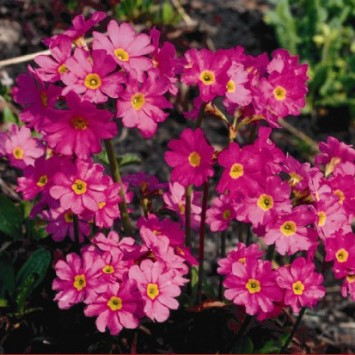
A pretty little alpine variety of primula from the Himalayas. Brilliant display of rose-pink flower heads above tufts of newly developing leaves is provided during Spring, one of the earliest primulas to flower.. Plant in cool, moist site preferably in partial shade. Water well before planting and keep moist at all times. Excellent for pondside planting, or any moist situation in the garden. Height 15 to 25 cm.
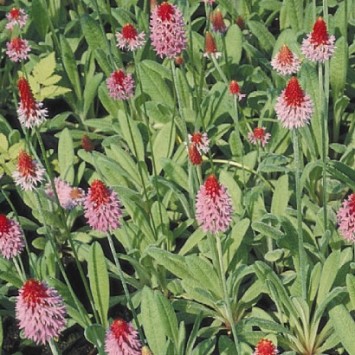
A striking primula with conical poker-type flower heads opening from crimson and changing to pale mauve as the flowers open fully. Excellent for the bog garden. Height to 15 cm. This plant is also suitable for the Pondside/Bog garden. Place around the edge of a pond, providing soil is damp and not waterlogged. Alternatively plant in damp areas of the garden.

Submerged oxygenating plants grow up from the deeper part of the pond; their underwater green leaves give off bubbles of oxygen during daylight hours which improve the quality of the pond water to the benefit of fish and other pond creatures. Underwater growth provides habitat for pond life such as newts and water snails which lay their eggs on submerged leaves. These plants give cover to fish and other pond life.

The Dwarf spearwort grows to 20-30 cm in height, a hardy British native water plant. It produces masses of pretty yellow flowers throughout the summer. Allow it to grow into clumps for best effect, and to provide habitat for pond insects. Plant in a medium or large container using aquatic soil covered with pea gravel and place on the marginal shelf. Trim decaying foliage in autumn.

An excellent British native submerged oxygenator with attractive ivy-like leaves which rise to the water surface. White flower sin profusion are held above the water surface.
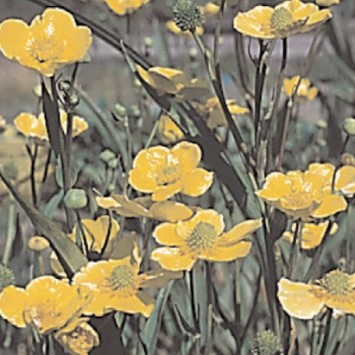
Great spearwort produces a bright show of golden yellow flowers in summer. Large, pointed oval leaves are borne on thick erect stems. Plant in a medium container using aquatic soil, covering with pea gravel. Place on the marginal shelf or alternatively in pool to a depth of 60cm. Tall, emergent plants provide habitat for pond insects, especially emerging dragonflies.
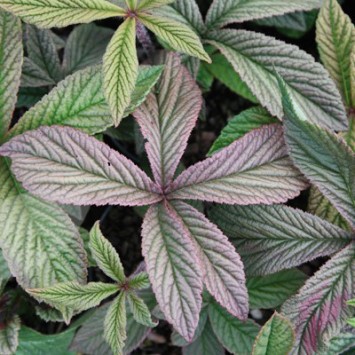
Rodgersia is grown mainly for the attractive foliage, which can be green or bronze in colour. Flowers are borne above the leaves in mid summer, creamy white to pink. An architectural plant, Rodgersia grows to about 90cm in height. The plant requires moist conditions and makes an excellent backdrop to other plants. It needs to be sheltered from strong winds. This plant is also suitable for the Pondside/Bog garden. Place around the edge of a pond, providing soil is damp and not waterlogged. Alternatively plant in damp areas of the garden.
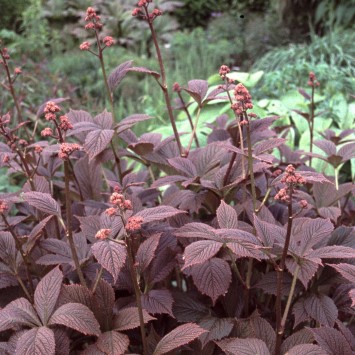

The toothcup originates from South East Asia and requires winter protection.
Like other oxygenating plants this plant helps to reduce algae and balance the pond. Adaptable to shallow or deeper water. Provides habitat for pond life such as newts and water snails.

This hardy form of arrowhead originates in North America. The leaves are broadly arrow shaped and flowers are clear white with yellow centres. Can be planted up to 60 cm deep. A useful marginal to plant in deeper areas where other marginals may not thrive. Tall, emergent plants are useful to pond insects such as emerging dragonflies. Plant in a medium or large container using aquatic soil covered with pea gravel. Trim decaying foliage in autumn.

A favourite pond plant, the arrowhead has strong erect foliage with broad arrow-shaped leaves. Flowers are white with black centres. Arrowhead thrives in deeper water than most marginals and is useful for areas up to 45 cm deep. Plant in a medium container using aquatic soil, covering with pea gravel.

Caradonna’ is a perennial cultivar with upright racemes of violet- purple flowers through the summer above narrow, rough, grey-green leaves. This Perennial plant is also in our award-winning Kind to Nature collection. It is now widely accepted that gardens are vital for the survival of the UKÔÇÖs wildlife. Gardens make up the majority of the green space in Britain and make significant contribution to the conservation of wildlife. Pollen and nectar rich plants are attractive to many species of insect. Pollen provides a source of protein needed for insect egg production and nectar is a valuable source of carbohydrates needed for energy. Plant your flowers in groups because en masse colour and scent is easier for insects to detect.
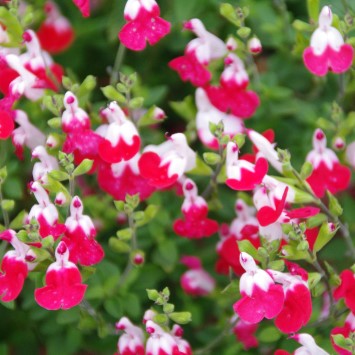
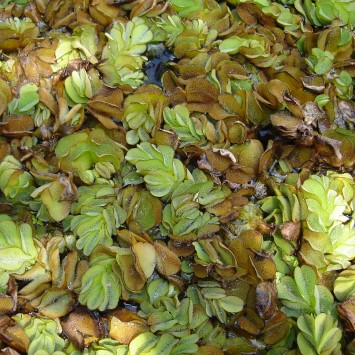
The Salvinias are floating annuals. they are generally of pale green colour, with slender stems bearing rather broad two-ranked leaves, and are covered in fine silky hairs which make them soft to the touch. Floating plants give shade to the pond surface, thus reducing algae. They provide cover and habitat for pond creatures.
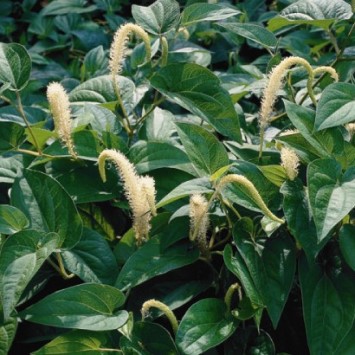
Drooping ‘tails’ of fragrant white flowers give this plant its name. Bright green heart-shaped leaves make it a favourite for the foliage. Plant in a medium container using aquatic soil, covering with pea gravel. Trim decaying foliage in Autumn. Height 30 to 60 cm.
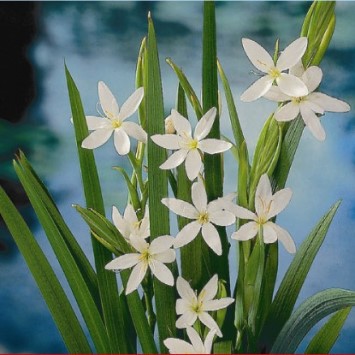
A handsome plant with graceful flowers similar to Gladioli. Tall Iris-like leaves, a beautiful subject for the bog garden. It is one of the very late flowering plants, bringing colour to the garden when other plants have died back. Height to 60 cm. This plant is also suitable for the Pondside/Bog garden. Place around the edge of a pond, providing soil is damp and not waterlogged. Alternatively plant in damp areas of the garden.
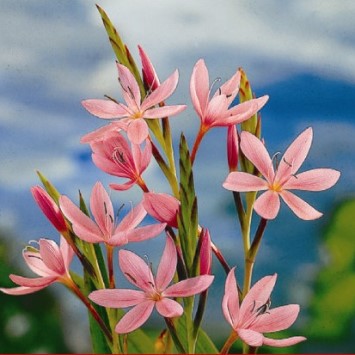
Light green blade-shaped leaves with slender spires of buds in Autumn. Beautiful pink sprays of flowers like miniature gladiolus, providing cheerful colour at the time when other plants are dying back. Must have damp soil at all times. Excellent as a pondside plant. This plant is also suitable for the Pondside/Bog garden. Place around the edge of a pond, providing soil is damp and not waterlogged. Alternatively plant in damp areas of the garden.
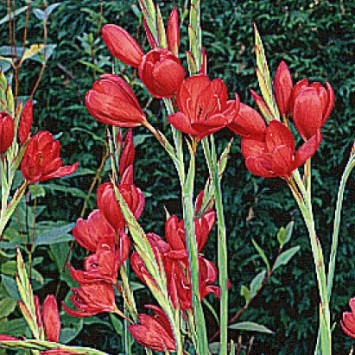
Light green blade-shaped leaves with slender spires of buds in Autumn. Beautiful red sprays of flowers like miniature gladiolus, providing cheerful colour at the time when other plants are dying back. Must have damp soil at all times. Excellent as a pondside plant. This plant is also suitable for the Pondside/Bog garden. Place around the edge of a pond, providing soil is damp and not waterlogged. Alternatively plant in damp areas of the garden.
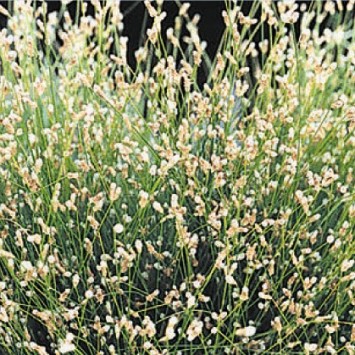
Also called the ‘┬Ç┬ÿFibre optic plant’┬Ç┬Ö, this bright green rush with slender evergreen leaves grows in attractive clumps. A native British plant that produces masses of tiny white flowers on emergent foliage. The submerged green shoots can assist with oxygenation of the pond water. It provides good habitat for wildlife. Plant in a medium container using aquatic soil with a good covering of pea gravel to prevent fish from uprooting the plants. This versatile grass can also be planted in a moist situation in the garden where it’s attractive and unusual foliage contrasts well with other plants.

A dwarf form of the ‘Fibre optic plant’, this bright green rush with slender evergreen leaves grows in attractive clumps. A native British plant that produces masses of tiny white flowers on emergent foliage. The submerged green shoots can assist with oxygenation of the pond water. It provides good habitat for wildlife. Height to 30 cm. Plant in a medium container using aquatic soil with a good covering of pea gravel to prevent fish from uprooting the plants.
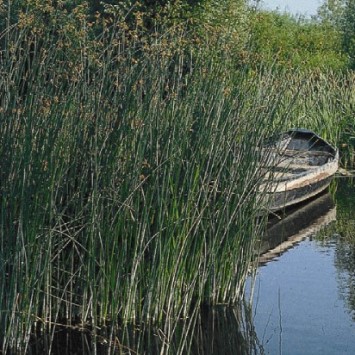
The true bulrush is extremely vigorous, a British native pond plant. Bold cylindrical dark green stems arise from a creeping rootstock. A good filtration plant, it is robust and resistant to waterfowl, making good nesting cover if allowed to grow into large clumps. Formerly used for thatching and furniture making. Height to 160 cm.
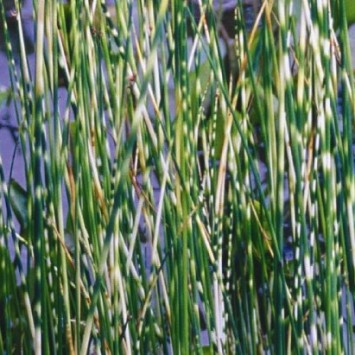
The true bulrush is extremely vigorous, a British native pond plant. Bold cylindrical dark green stems arise from a creeping rootstock. A good filtration plant, it is robust and resistant to waterfowl, making good nesting cover if allowed to grow into large clumps. Formerly used for thatching and furniture making. Height to 160 cm.
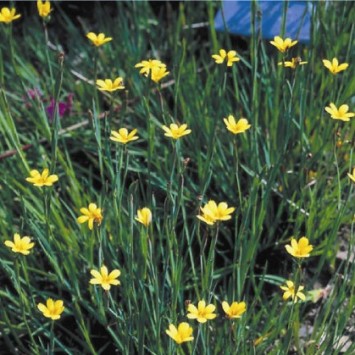
Small yellow flowers are born on the top of miniature Iris-type leaves. Forms pretty clumps for pondside planting. Height to 15 cm. Green foliage takes on a mauve tint in winter; semi-evergreen. This plant is also suitable for the Pondside/Bog garden. Place around the edge of a pond, providing soil is damp and not waterlogged. Alternatively, plant in damp areas of the garden.

A wonderful grass that form fountain-like clumps of slender foliage which emerges green and turns yellow, orange and red. Grows to 1m tall.
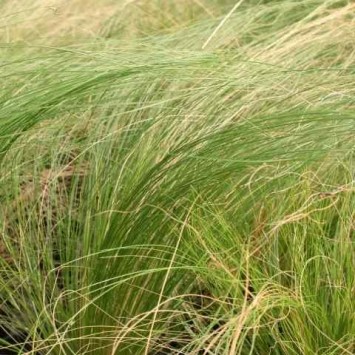
A tufted deciduous grass that forms upright strcture of thin, wispy green-yellow leaves. This plant is ideal for the borders or containers, adding movement in the slightest breeze.

This is a curious native plant – in general appearance resembling an aloe. The leaves are borne in rosettes and are long, narrow and serrated. The plant delights to root in the mud of the pond and has the abitility to rise to the rop of the pond in Spring and return to the bottom of the pond in Autumn. Small white flowers are prodced in summer.
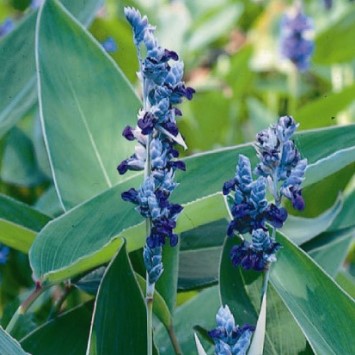
A wonderful, exotic looking marginal pond plant. A very tall plant growing to 250 cm in height. Striking lush waxy leaves complement the exotic flower spikes of Thalias. The unusual flower heads cluster in blue buds bursting into violet blossoms, which are followed by decorative seed heads. Remove decaying foliage regularly for best effect. Plant in zone 2 or 3, preferably in full sun.
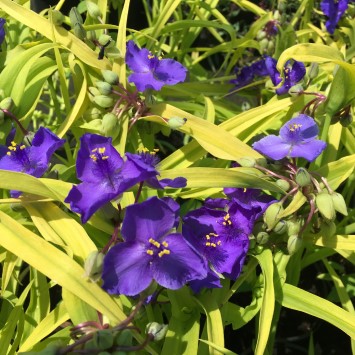
A lovely form of spiderwort with bright golden foliage and delicate blue flowers from June to September. Very easy to grow, can make a great exotic looking patop focal point or use in the garden.
Prefers full sun or partial shade. Will from to 30cm. Bring indoors in the winer months.

This lovely form of spiderwort has dark purple foliage and delicate pink flowers, a beautiful colour combination and excellent to include in a mixed border planting or to feature in a patio pot. It is quite hardy, but is best protected with mulch in a garden situation. Water weekly.
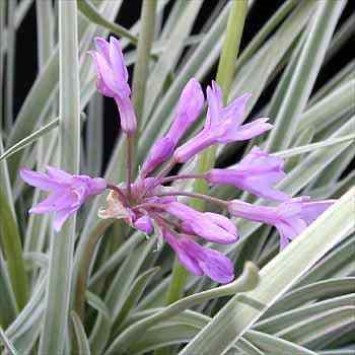
Neat clumps of narrow grass like leaves are delicately variegated in grey/green and white and topped by a wealth of small very attractive purple/pink flowers in clusters. Likes well drained soil. Height to 50cm. An excellent plant for container growing, or in the garden. Can be cut back to 3cm in autumn and mulched with peat. Plant in a sunny position.

Neat clumps of narrow grass like leaves are grey/green and are topped by a wealth of small very attractive purple/pink flowers in clusters. Likes well drained soil. Height to 50cm. An excellent plant for container growing, or in the garden. Can be cut back to 3cm in autumn and mulched with peat. Plant in a sunny position. This plant is also suitable for the Pondside/Bog garden. Place around the edge of a pond, providing soil is damp and not waterlogged. Alternatively plant in damp areas of the garden.

This smaller type of reedmace has slender erect leaves and brown poker seed heads. A British native pond plant with fibrous roots that are good for water filtration. Often wrongly referred to as ÔÇÿBullrushÔÇÖ. Height to 120 cm. plant in zone 2 or 3.

The Great reedmace is a strong growing plant, resistant to waterfowl. It is a good filtration plant, removing impurities from the pond water. The seed heads are sturdy brown pokers, often used in flower arrangements or dried for winter decorations. Reedmace is often wrongly referred to as ‘Bulrush’. Tall, emergent plants provide habitat for pond insects, especially emerging dragonflies. It can be planted up to 60cm deep, useful for deeper water areas where some other marginals would not thrive. Plant in a medium or large container using aquatic soil and covering with pea gravel. Trim off old foliage in spring and remove unwanted side shoots.
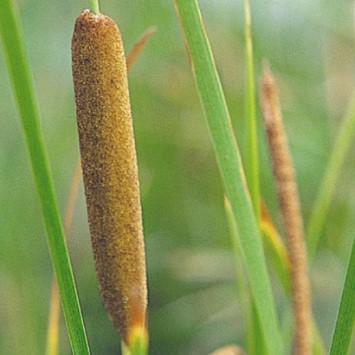
This is a tall, graceful member of the reedmace family, coming from South East Europe. It can be planted up to 40 cm deep and is a good filtration plant. Reedmace is often wrongly called ‘bullrush’; the flower heads of slender brown pokers are produced in late summer. Reedmace is a useful plant: the leaves and stems are used for thatching and for mats and baskets, the down from the seed heads to stuff pillows and cushions, the roots can be boiled or roasted and eaten. The tall emergent leaves are useful to pond insects such as emerging dragonflies. Plant in a large container using aquatic soil and covering with pea gravel. Trim decaying foliage in autumn
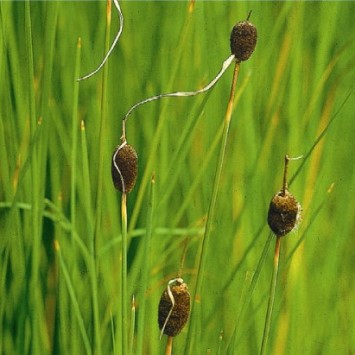
The miniature reedmace is ideal for ornamental ponds. Forms attractive clumps of fine erect leaves with round seed heads. Height to 60 cm. Easily contained within a planting basket.
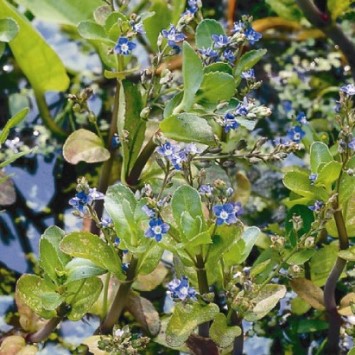
An old favourite British native pond plant, Brooklime is suitable for any pond. It has a rafting habit, small round green leaves are borne on creeping stems and pretty little blue flowers are produced in summer. It is ideal for covering the edges of containers or planting in waterfalls. In the pond margins it creeps out in a raft providing hiding places for baby fish and habitat for pond creatures. Plant in a small or medium container on its own or with other plants. Use aquatic soil covered with pea gravel and place on the marginal shelf.

A favourite garden plant originally from South Afruca, the arum lily is excellent for borders or general garden planting, and one that looks especially good in patio pots as a feature. Also an excellent subject for pond planting, as a pondside plant or a marginal in zone 2. Grows into magnificent clumps with a wealth of strong, waxy leaves; Cut flowers are a favourite for use in flower arrangements. Plant in sun or part shade. Height 60 to 90 cm.

A wonderful spotted leaf zantedeschia
